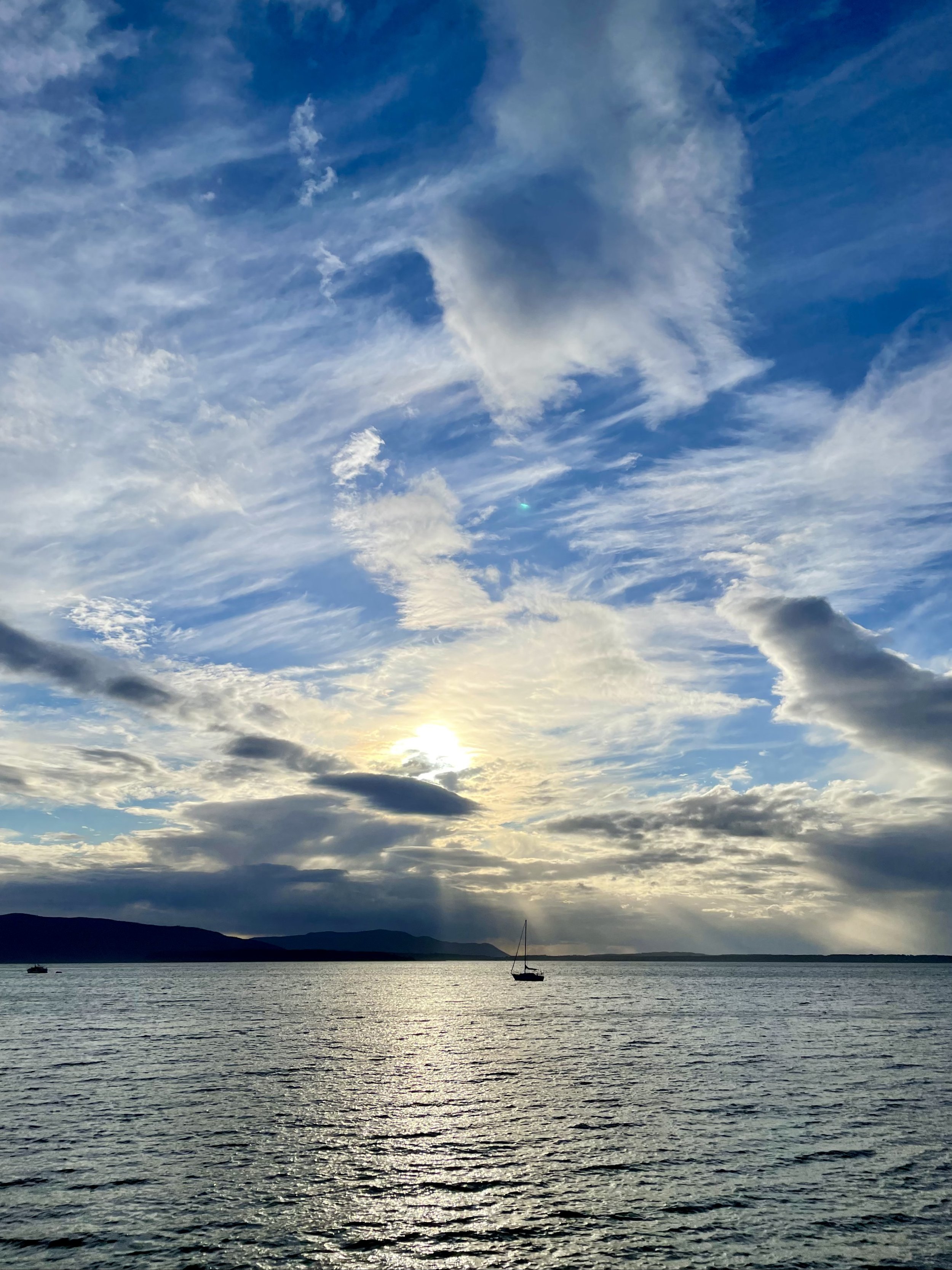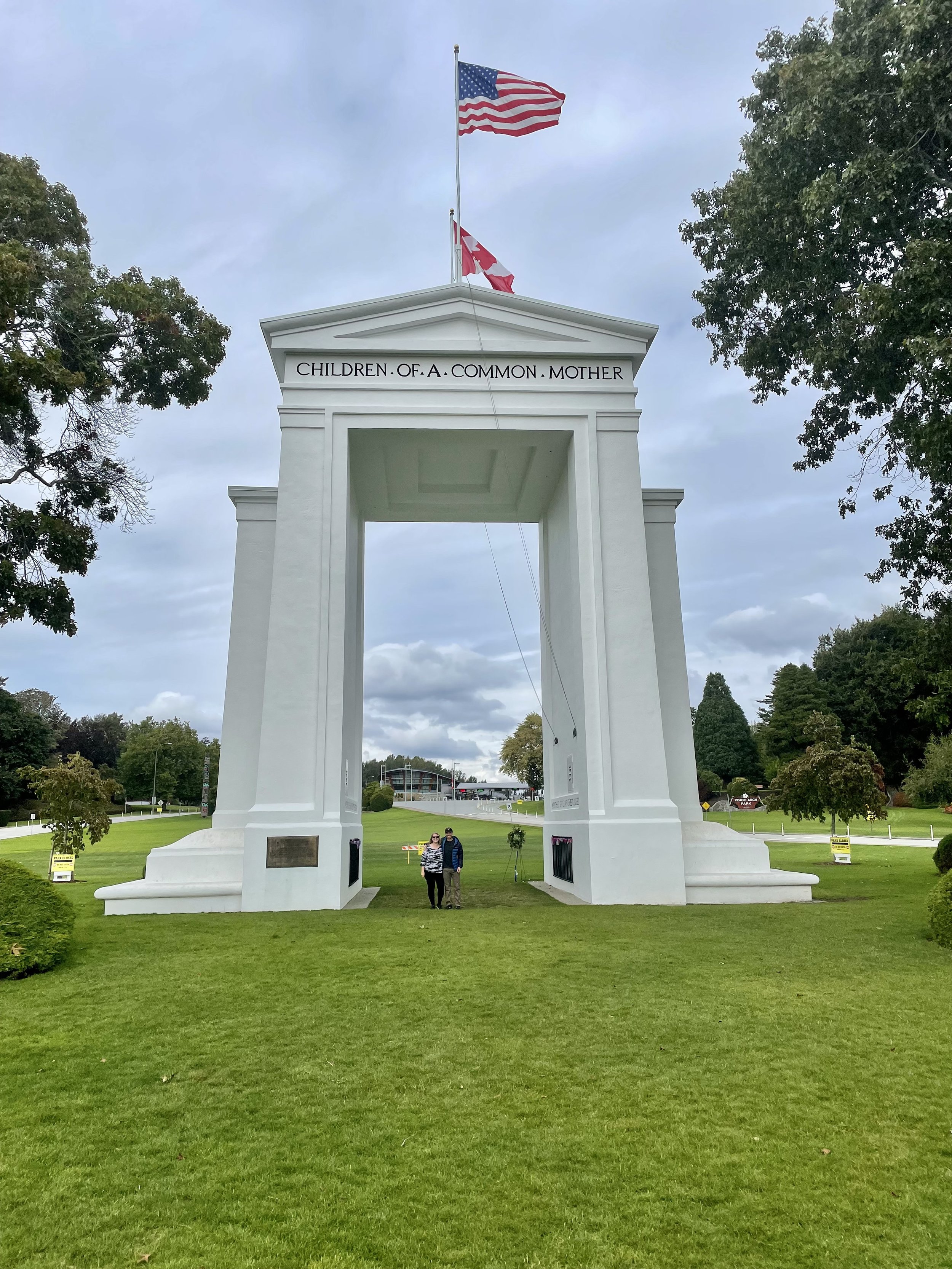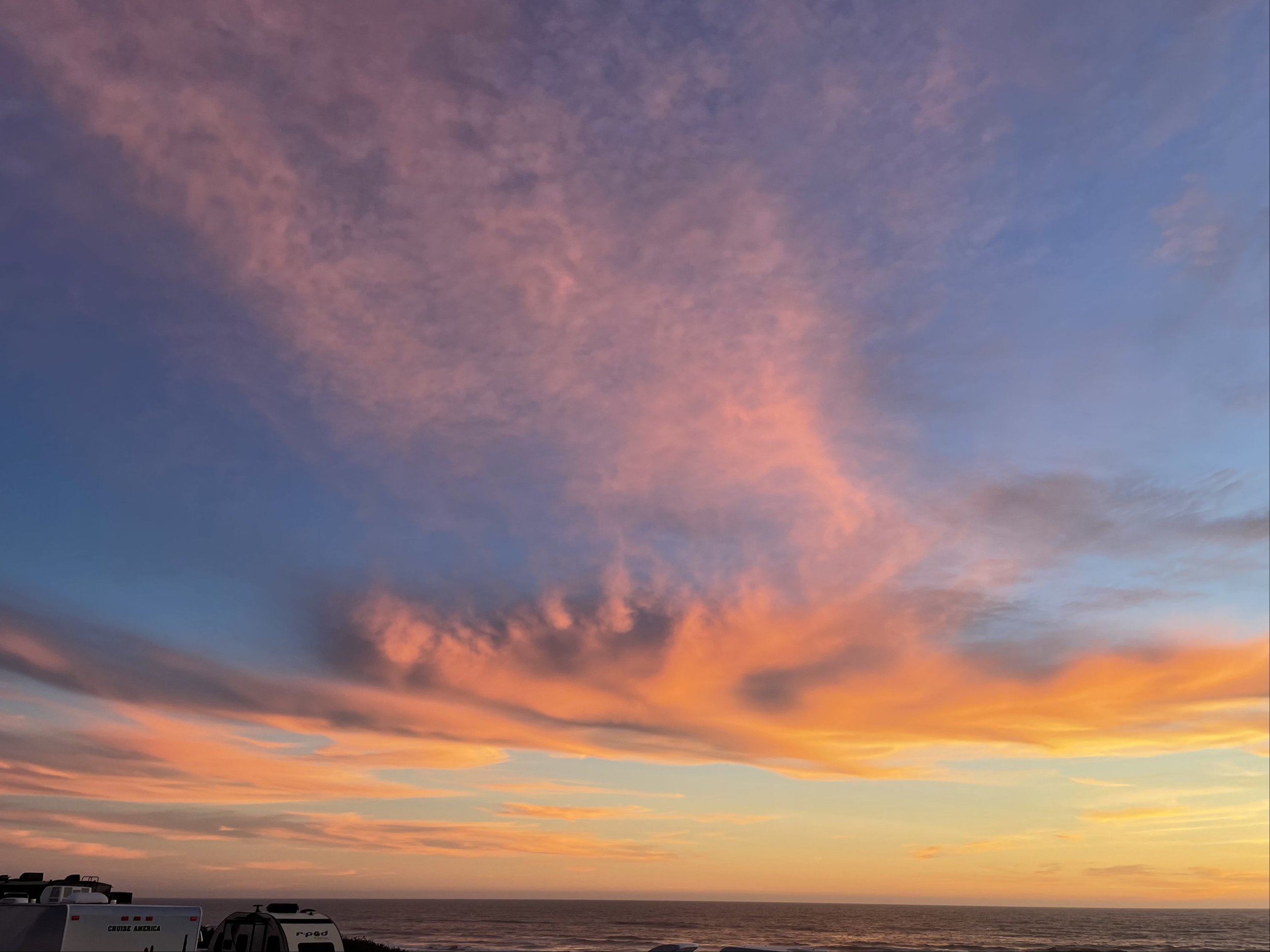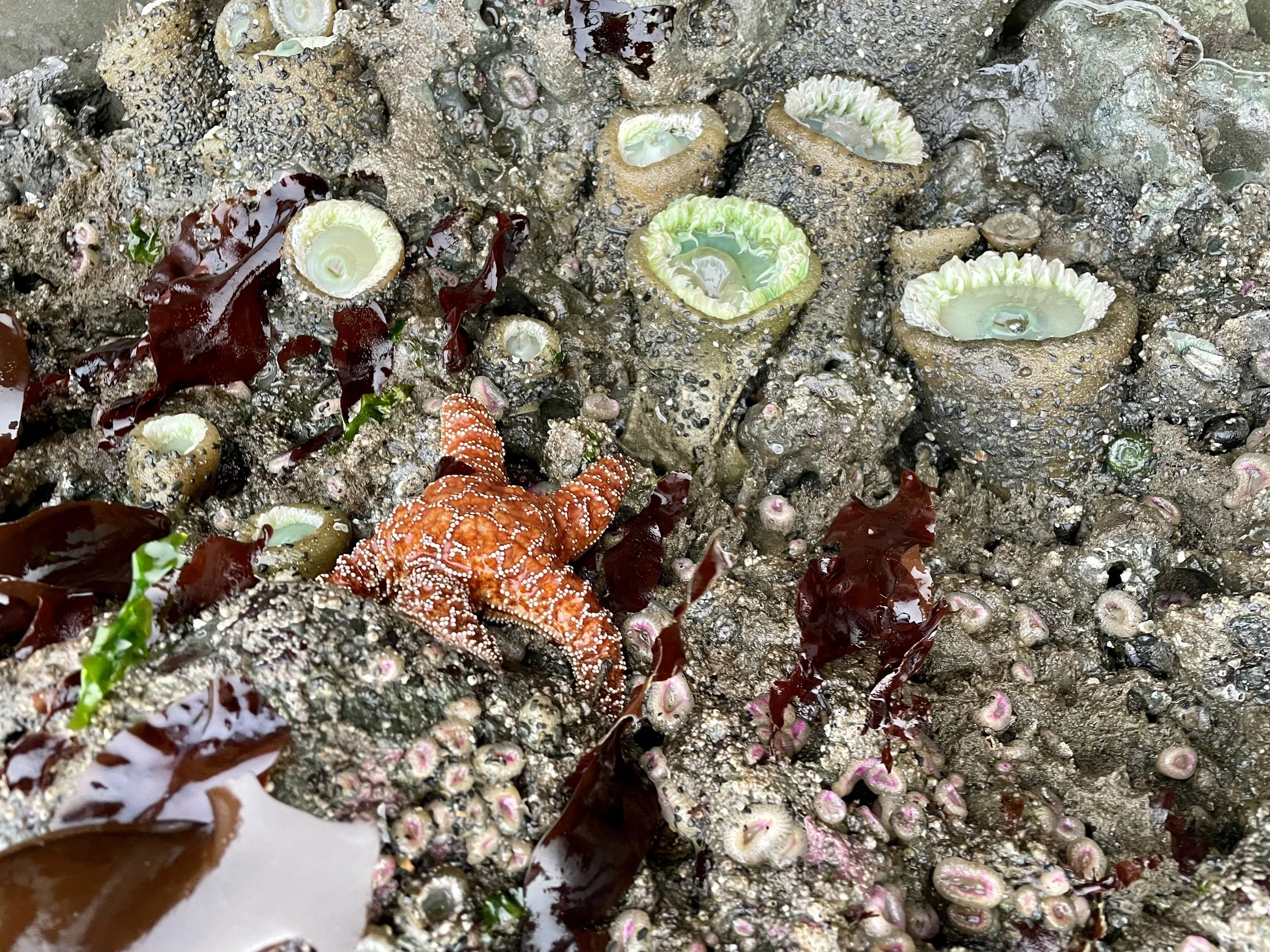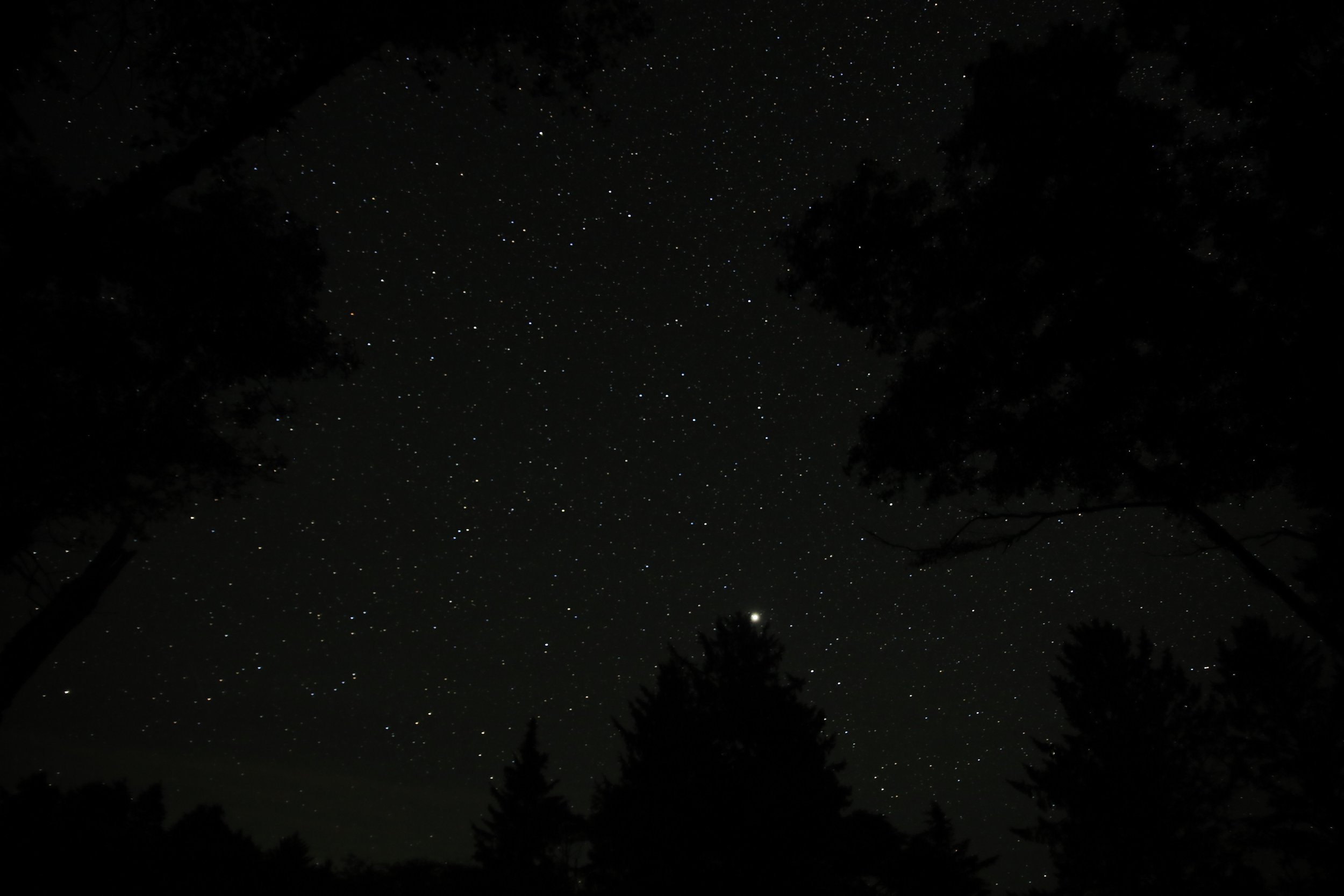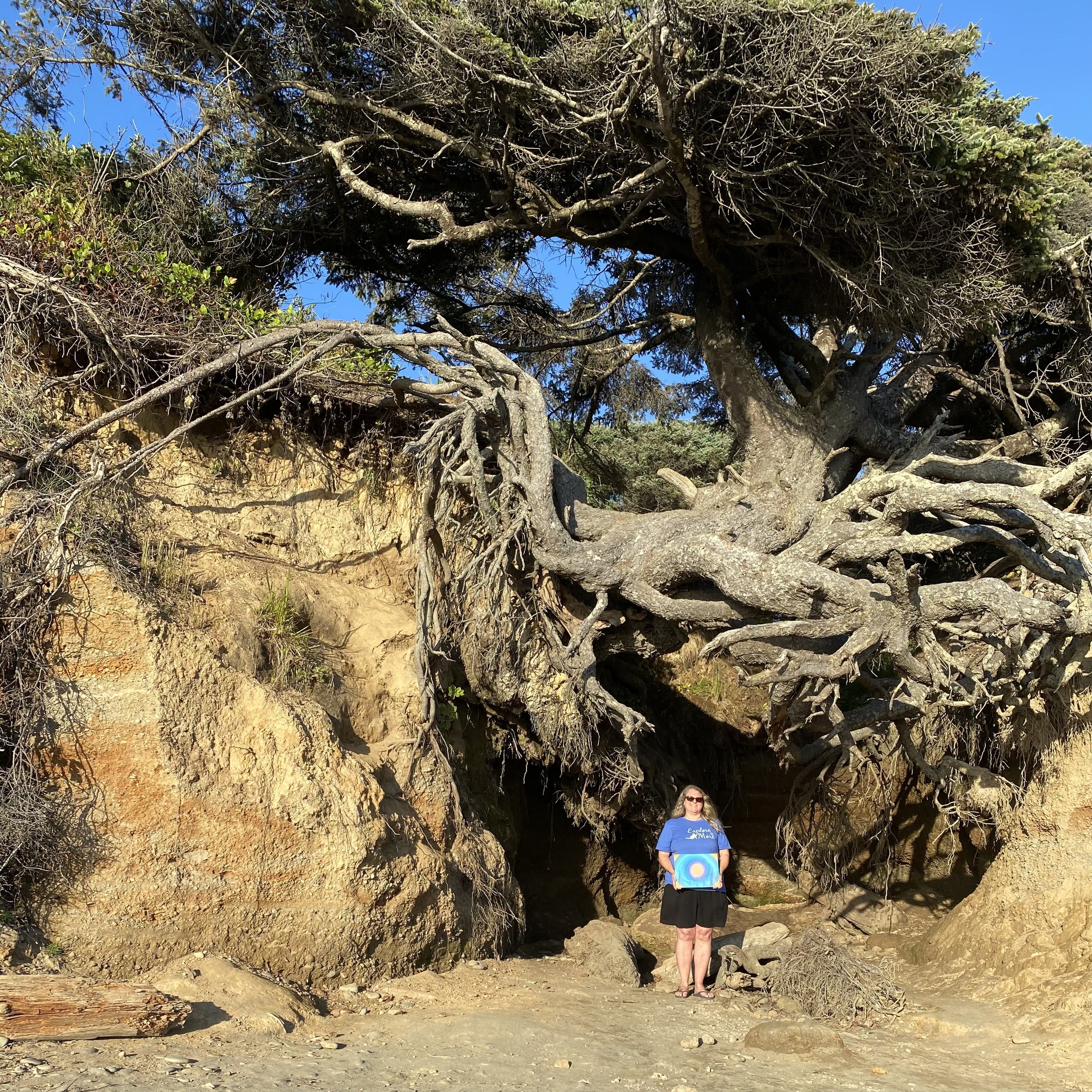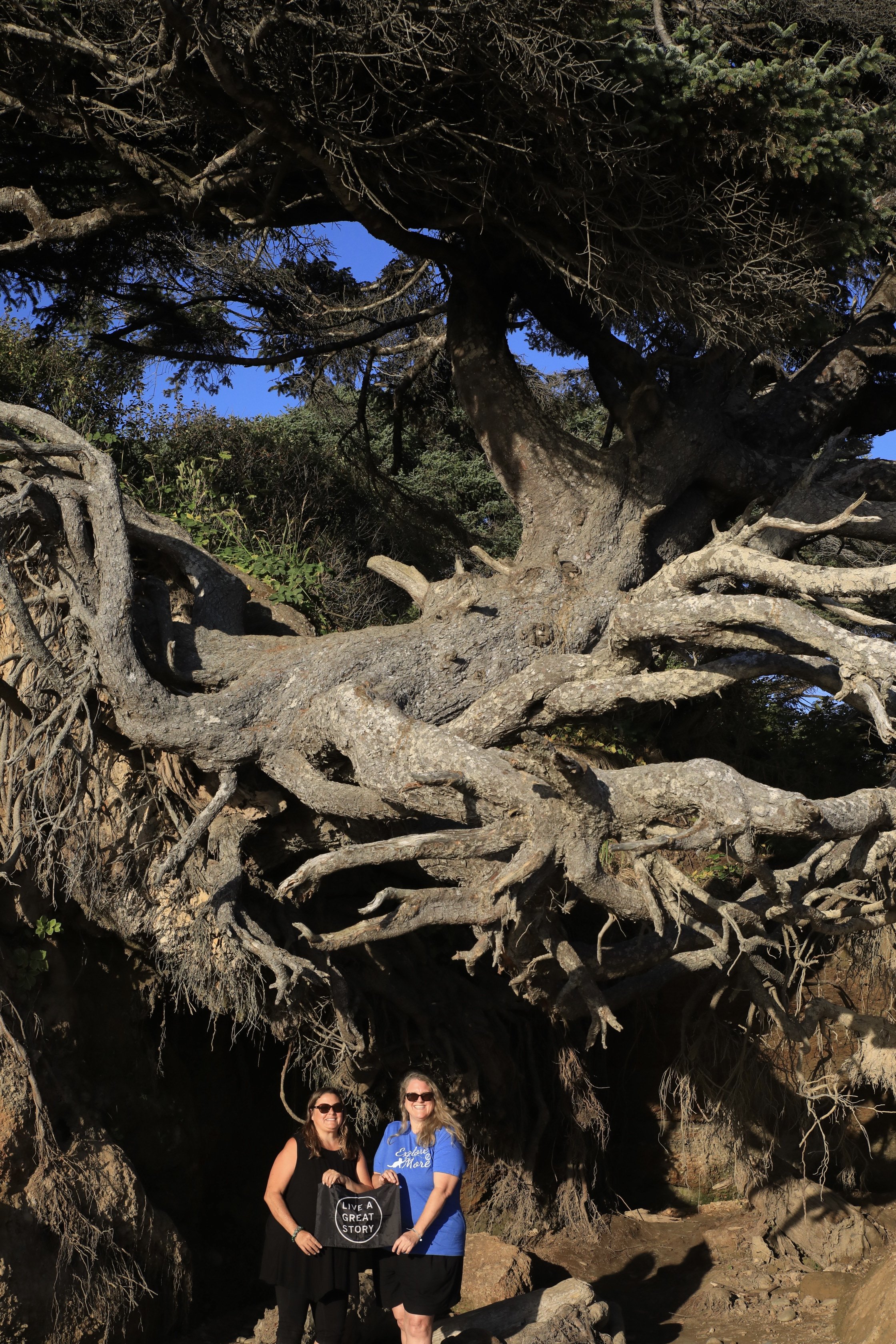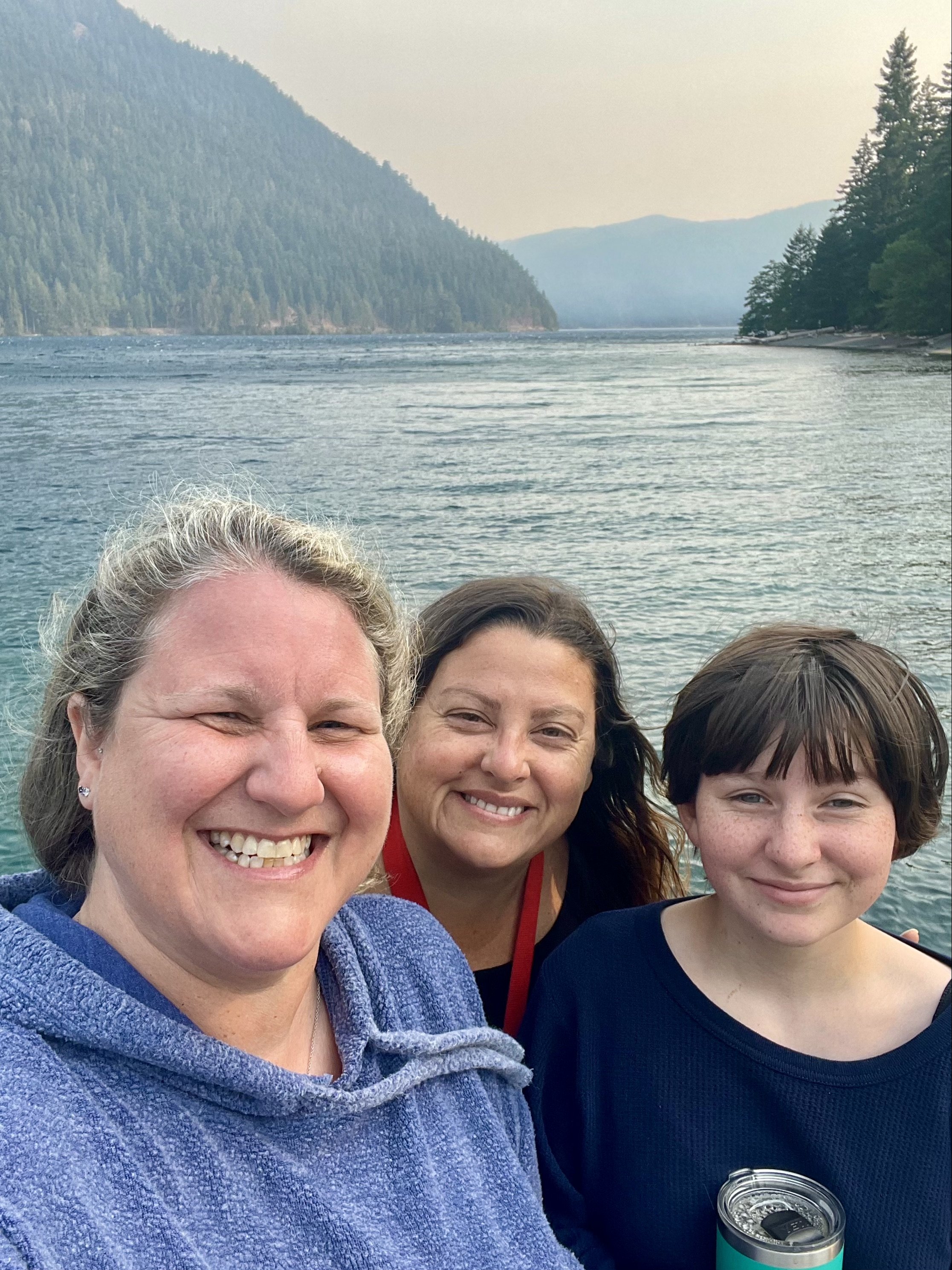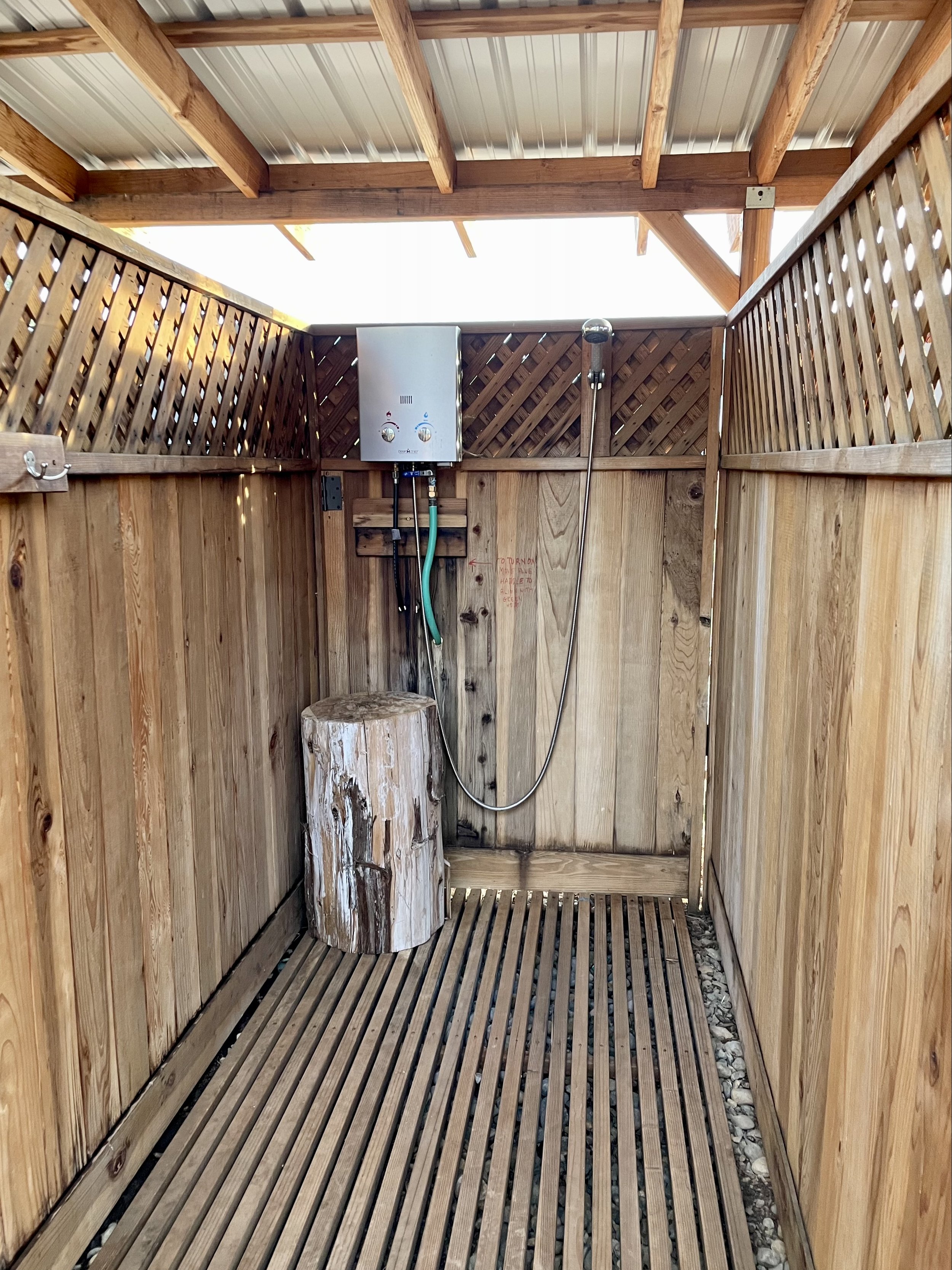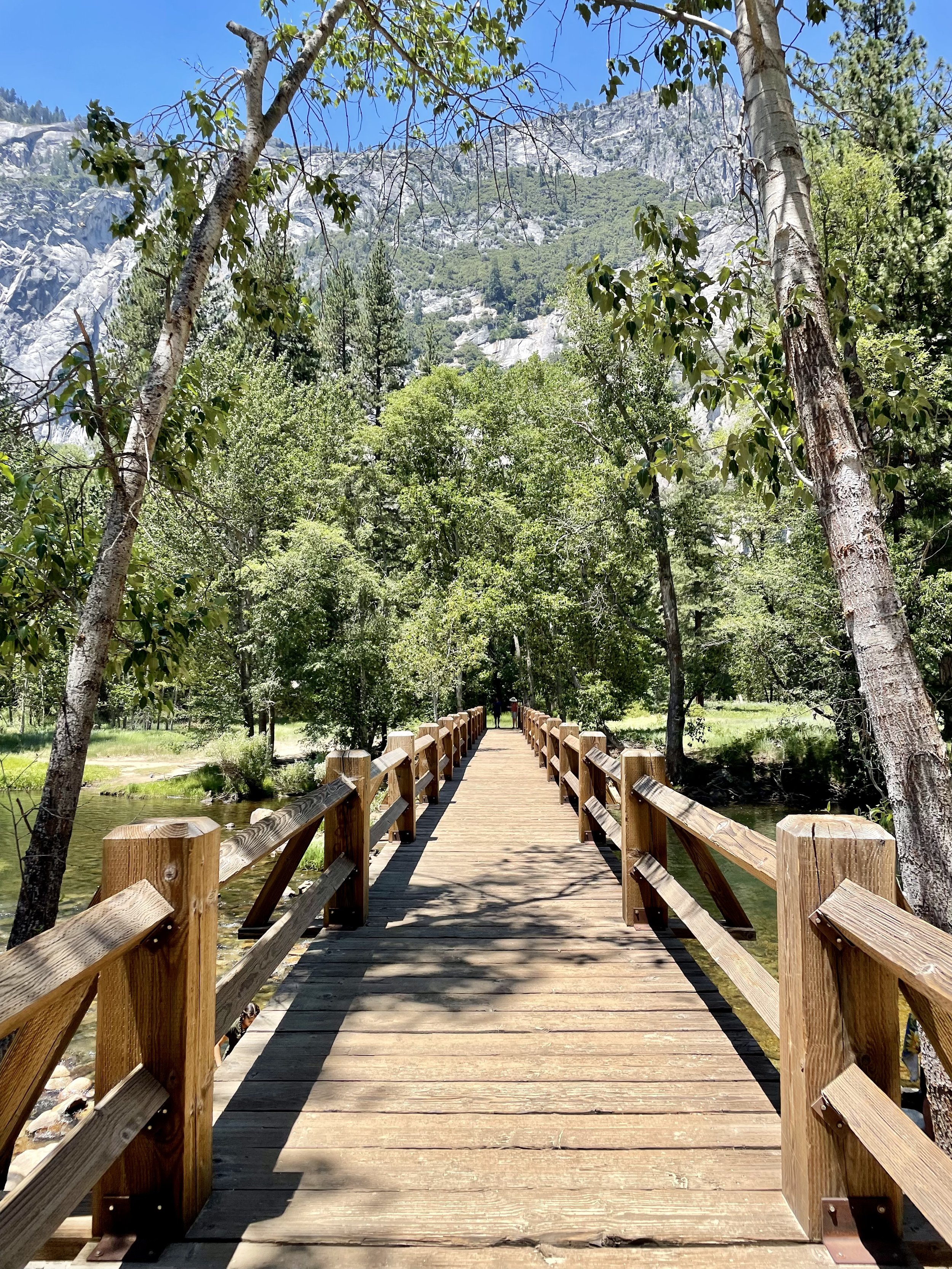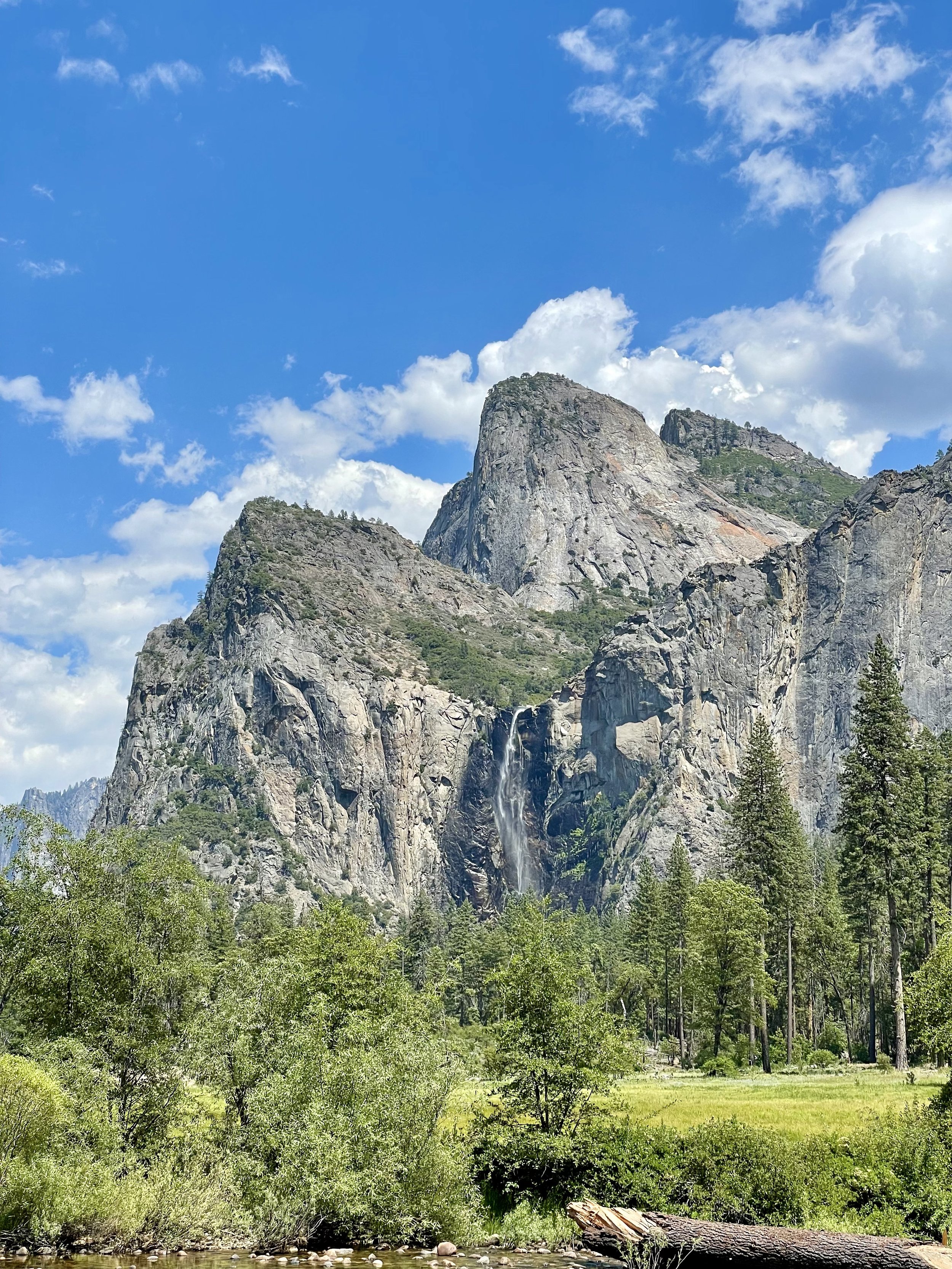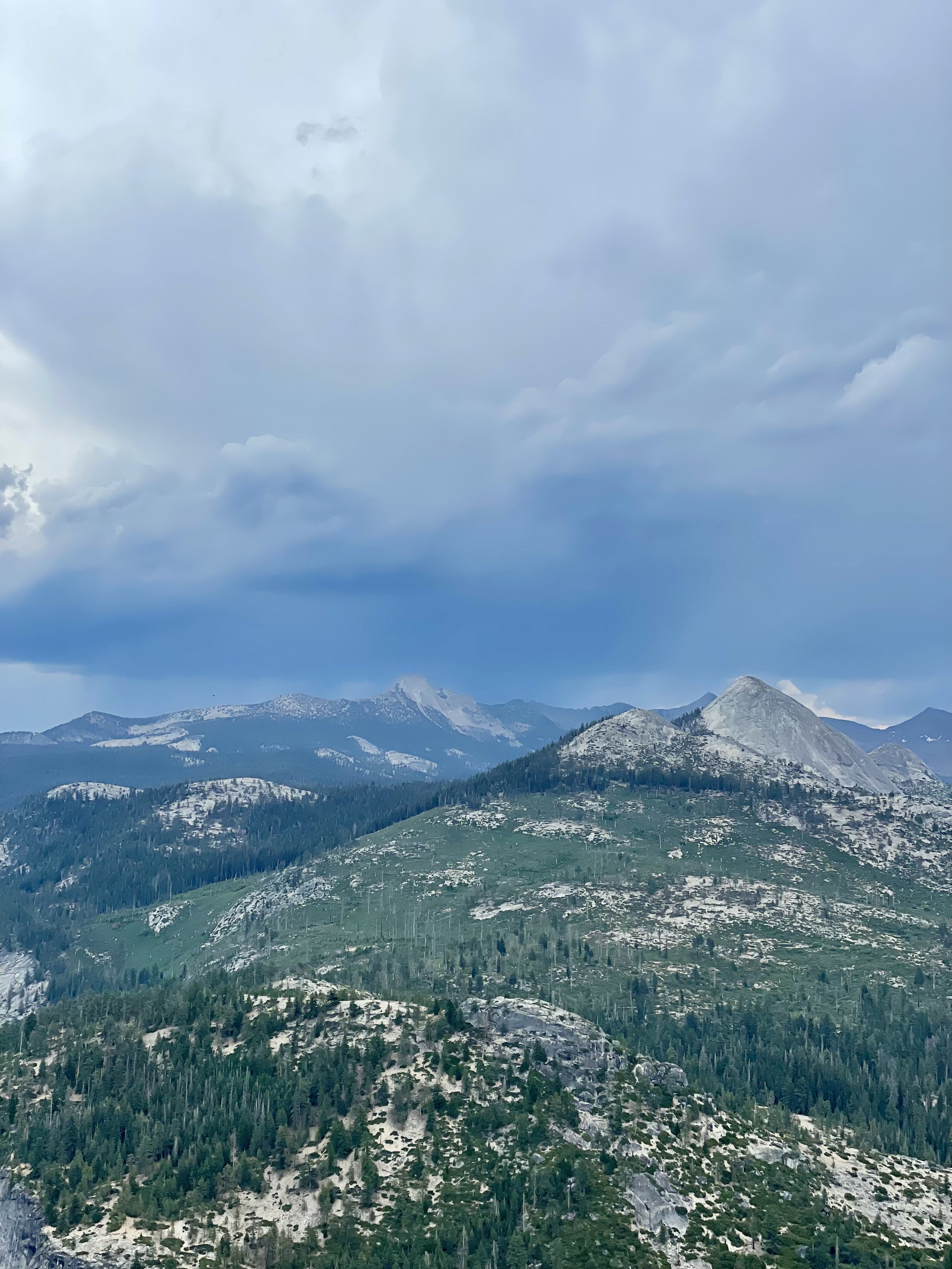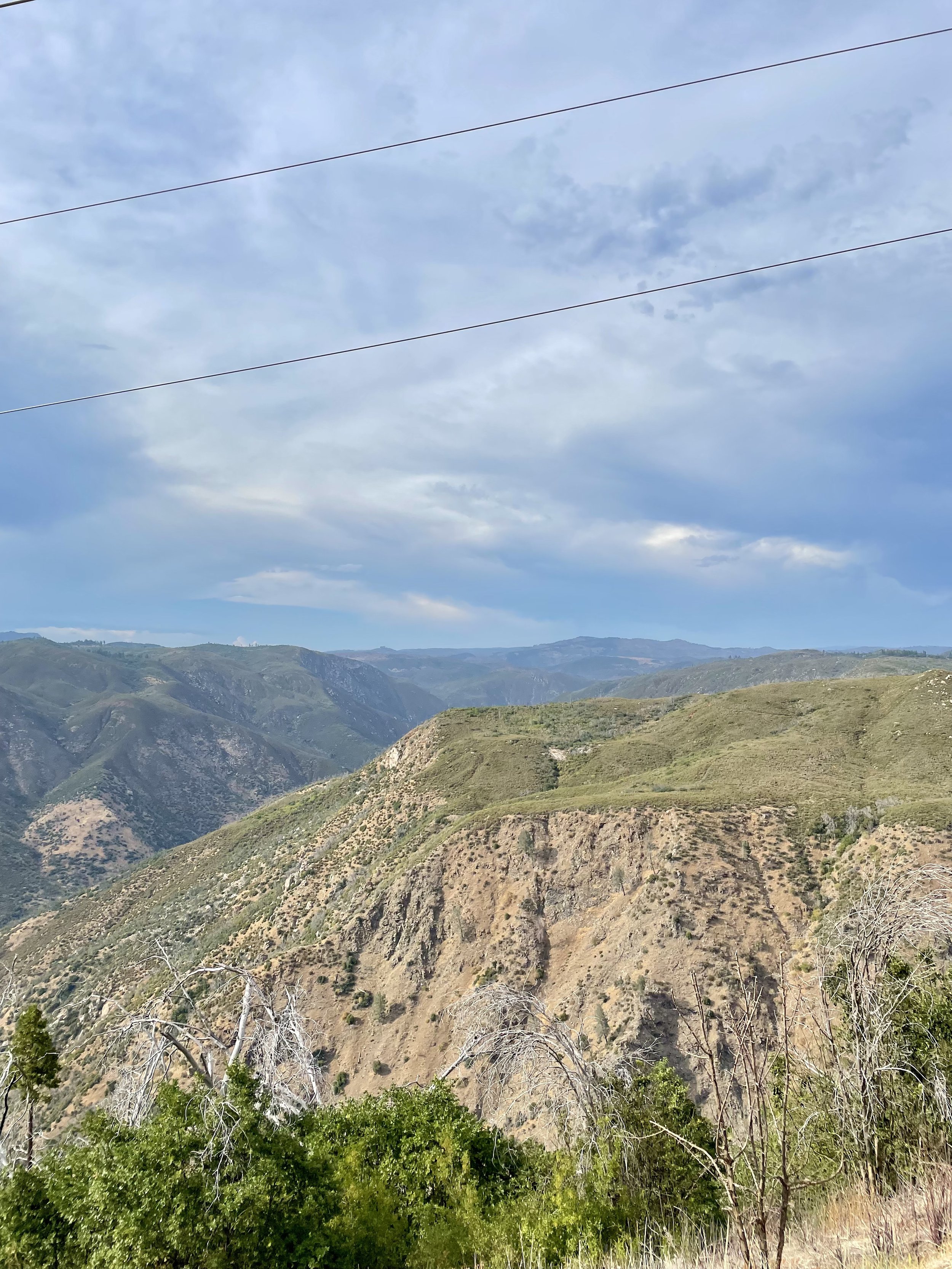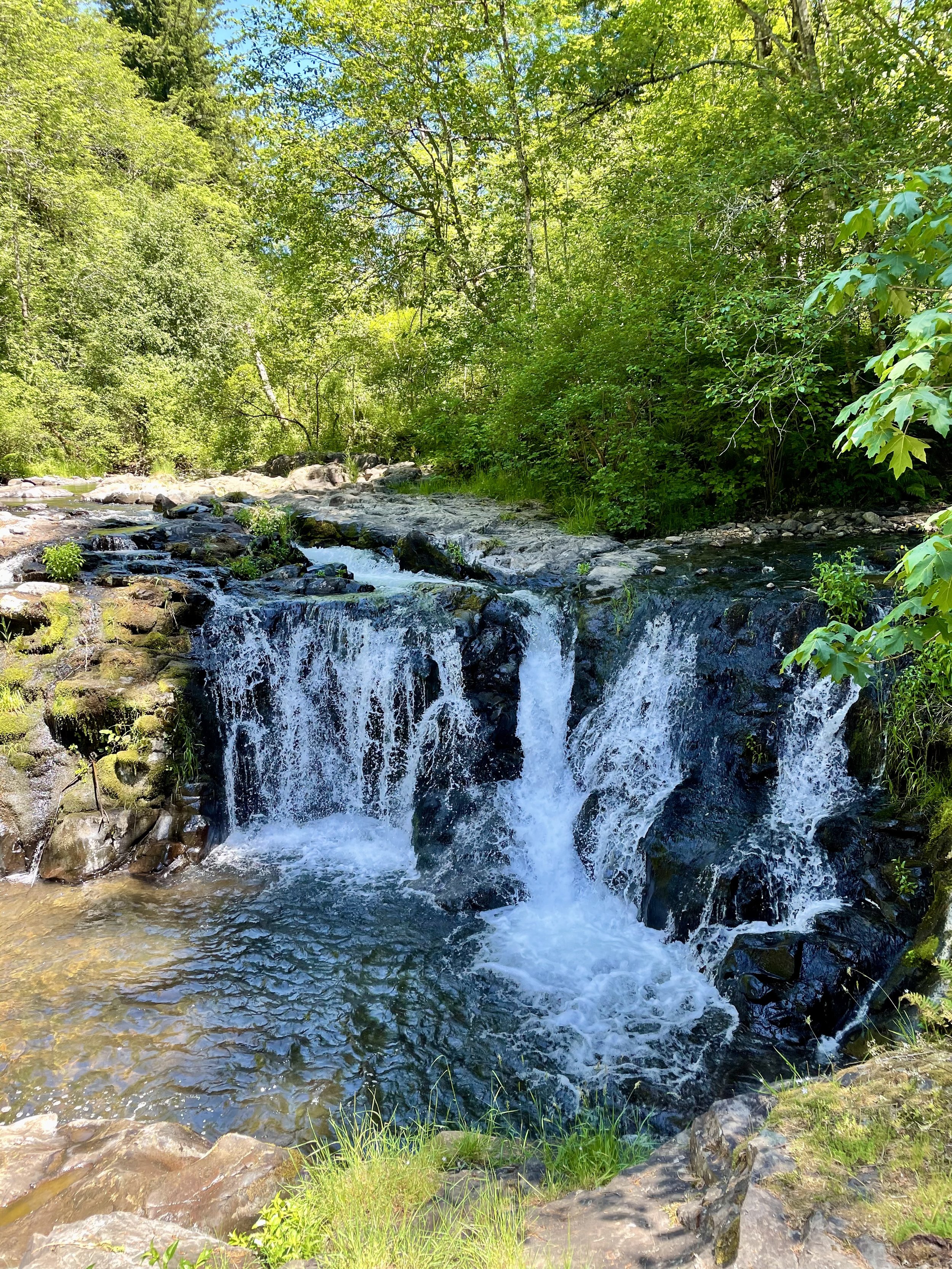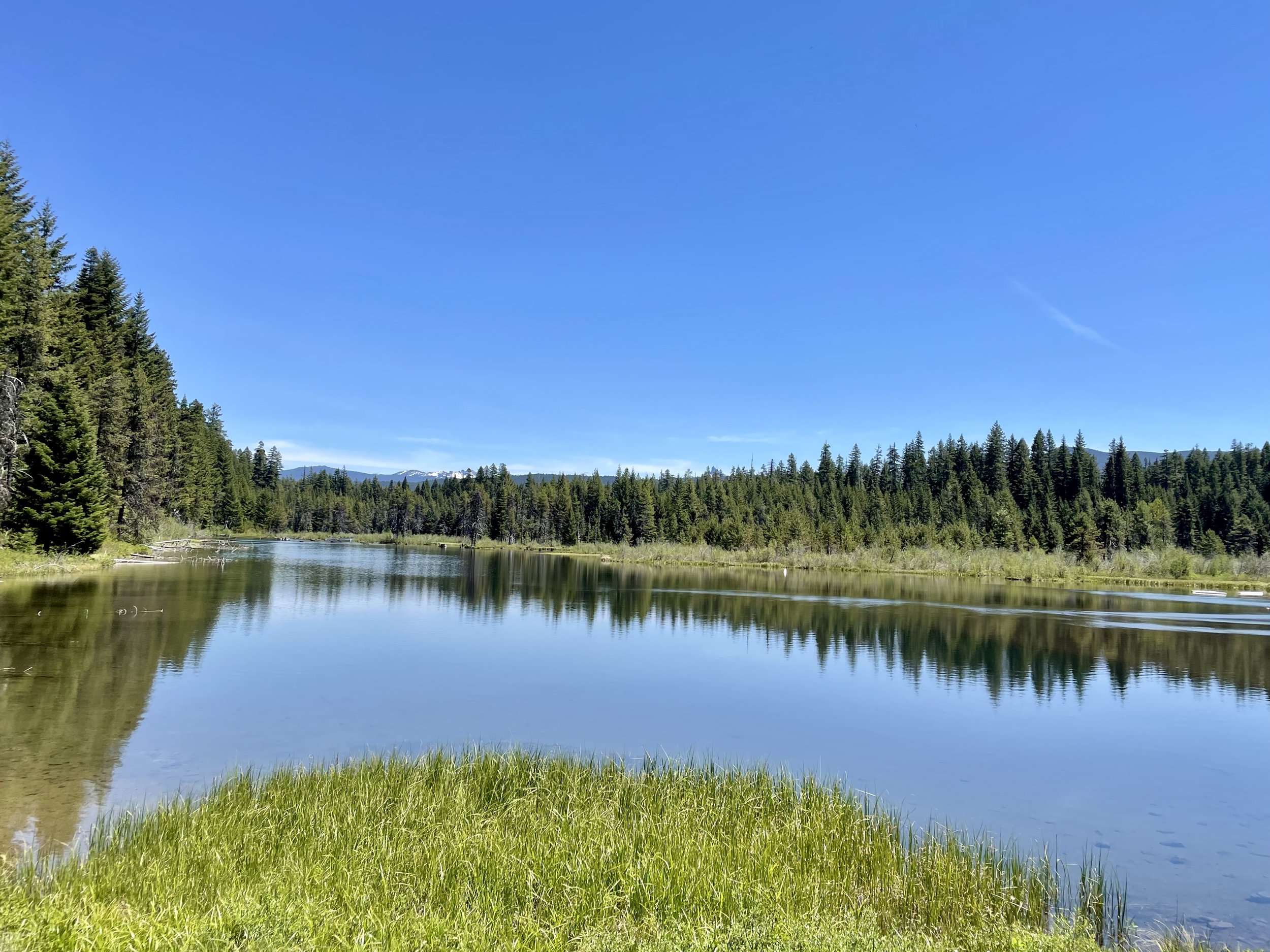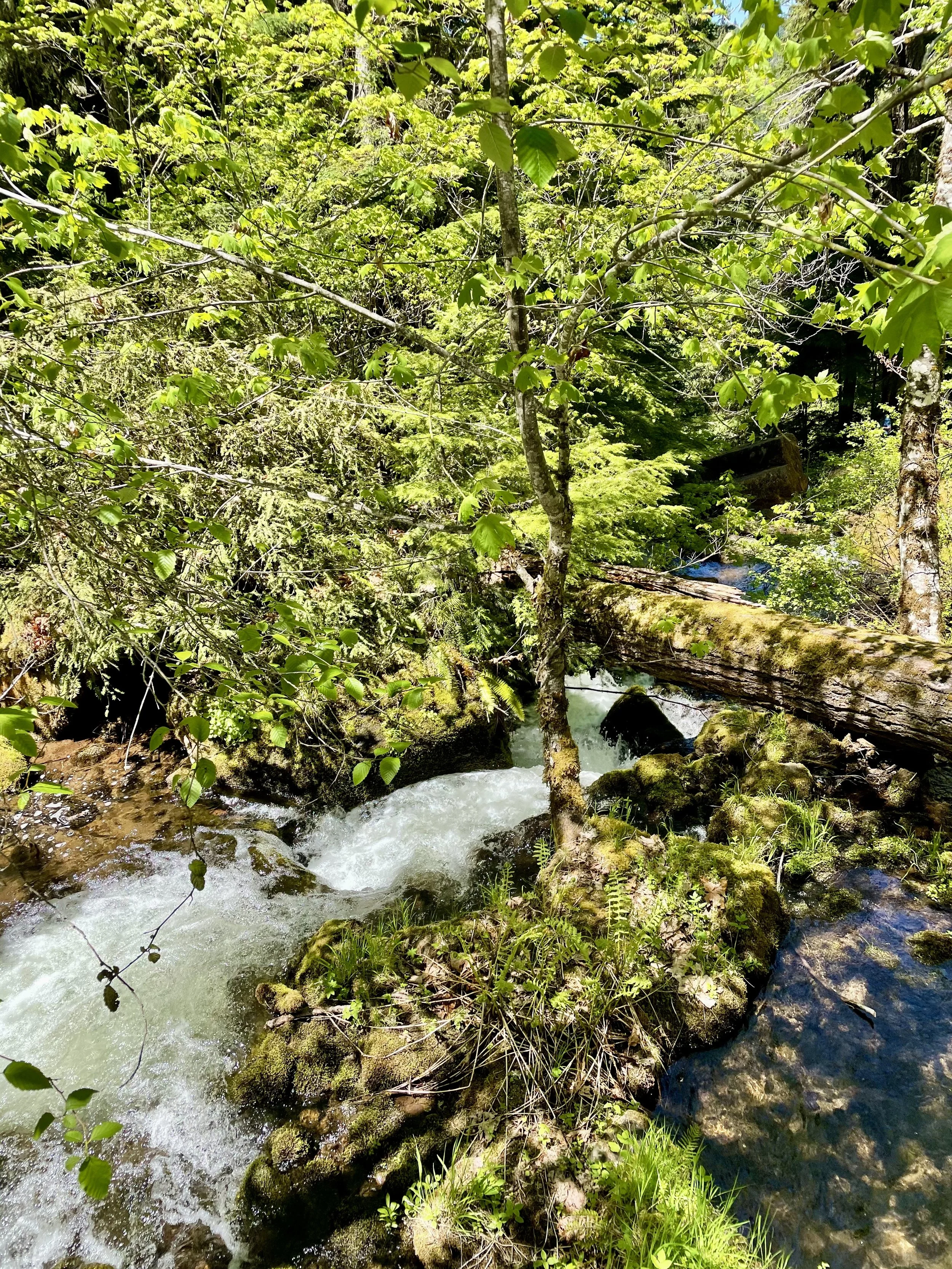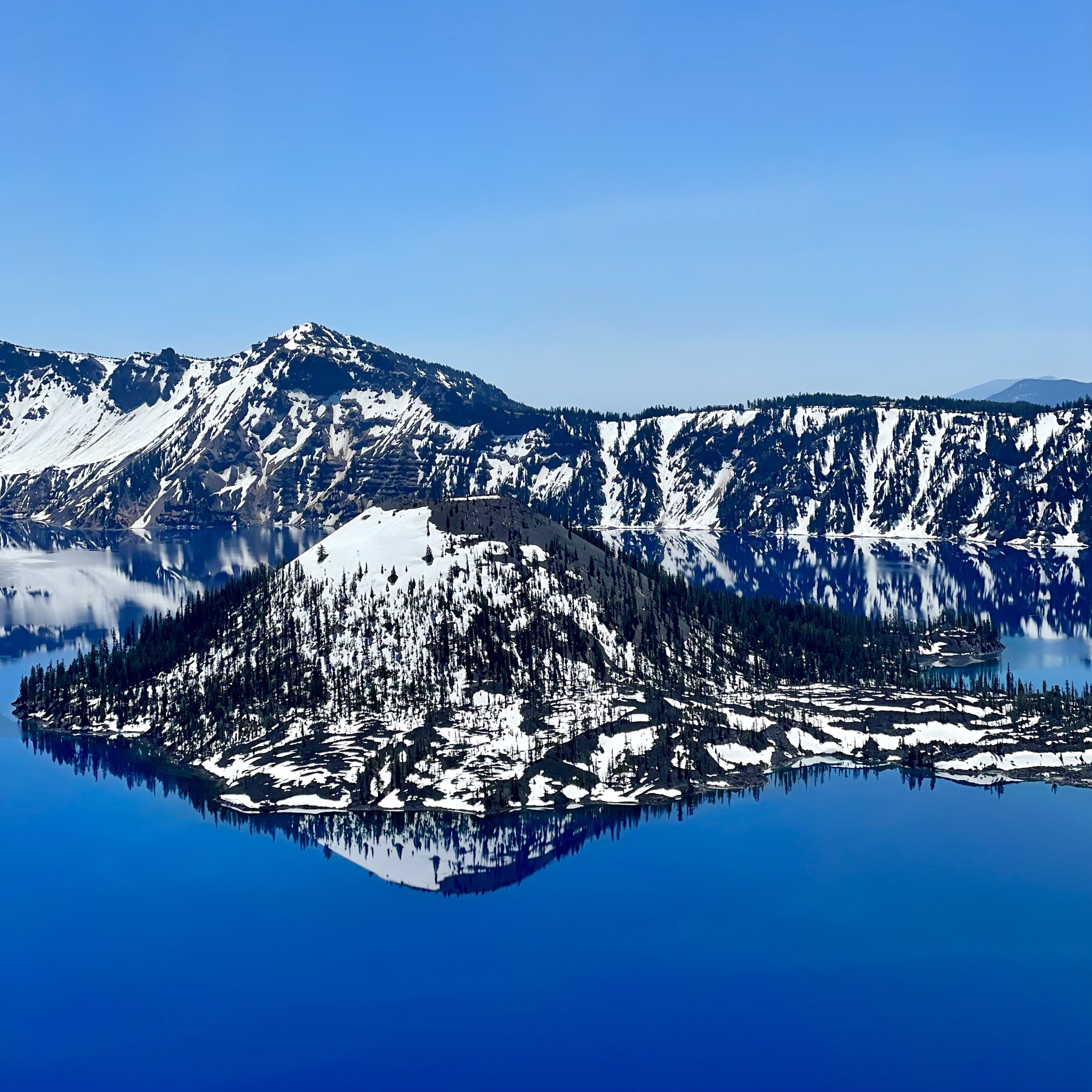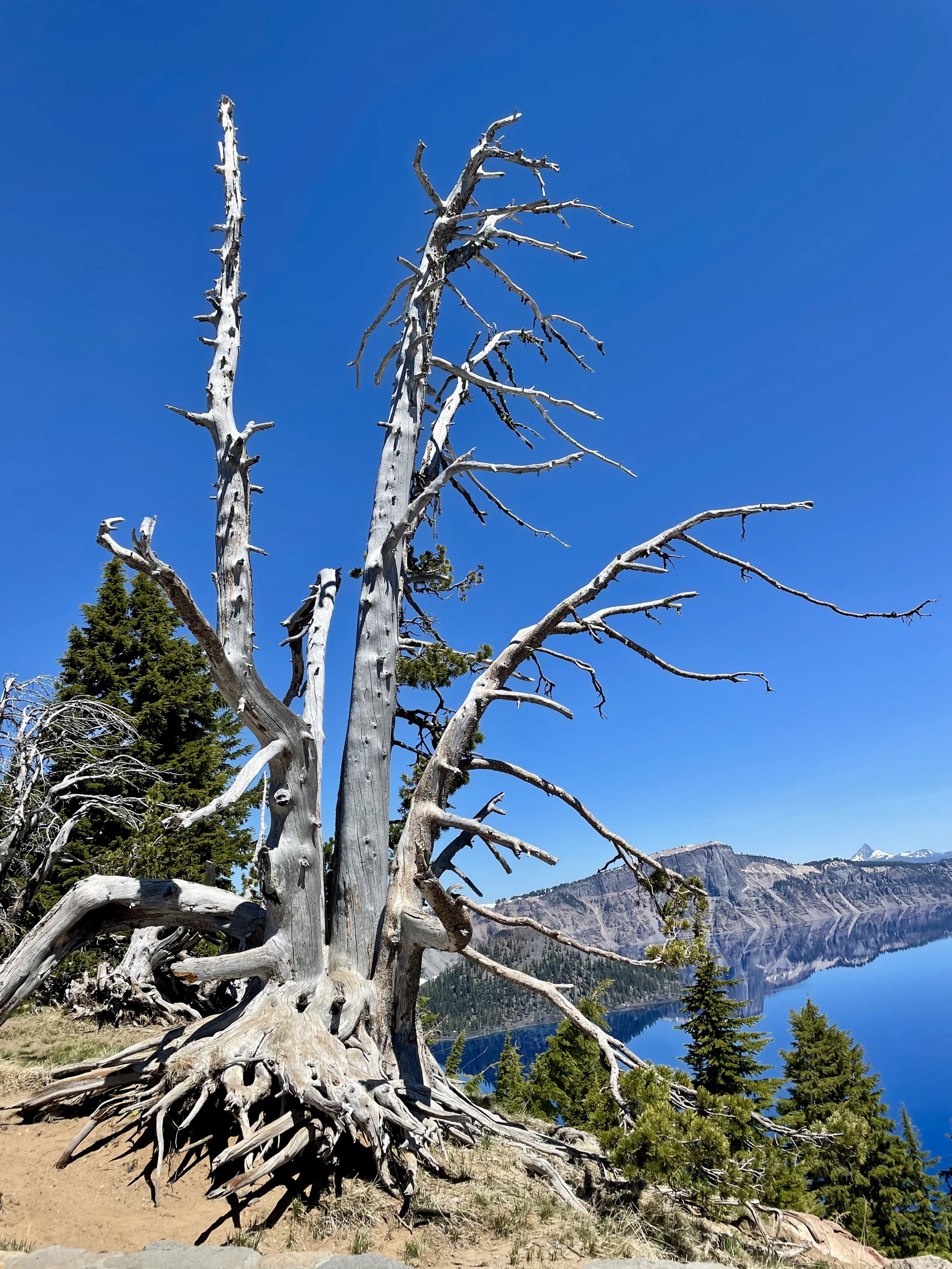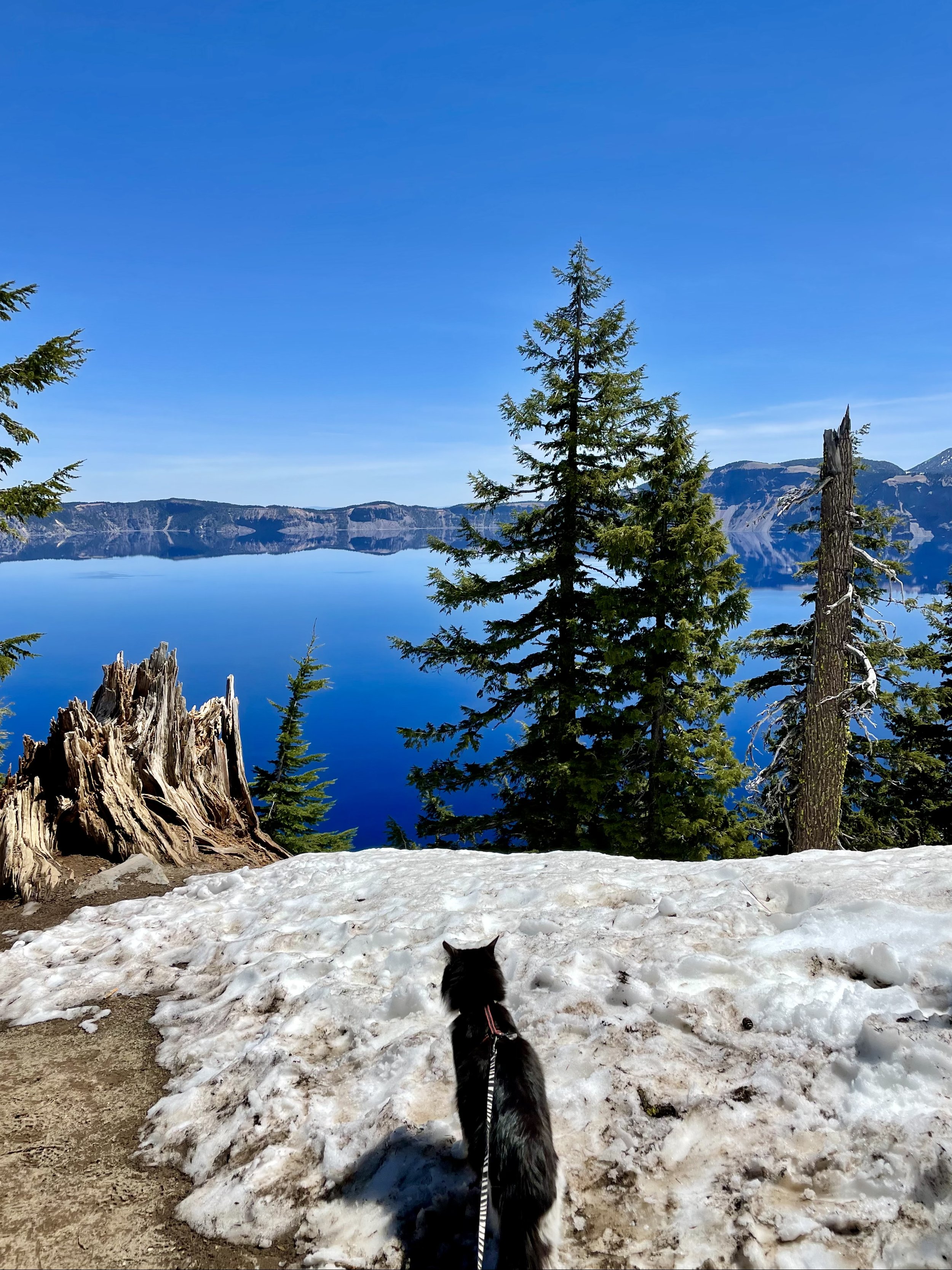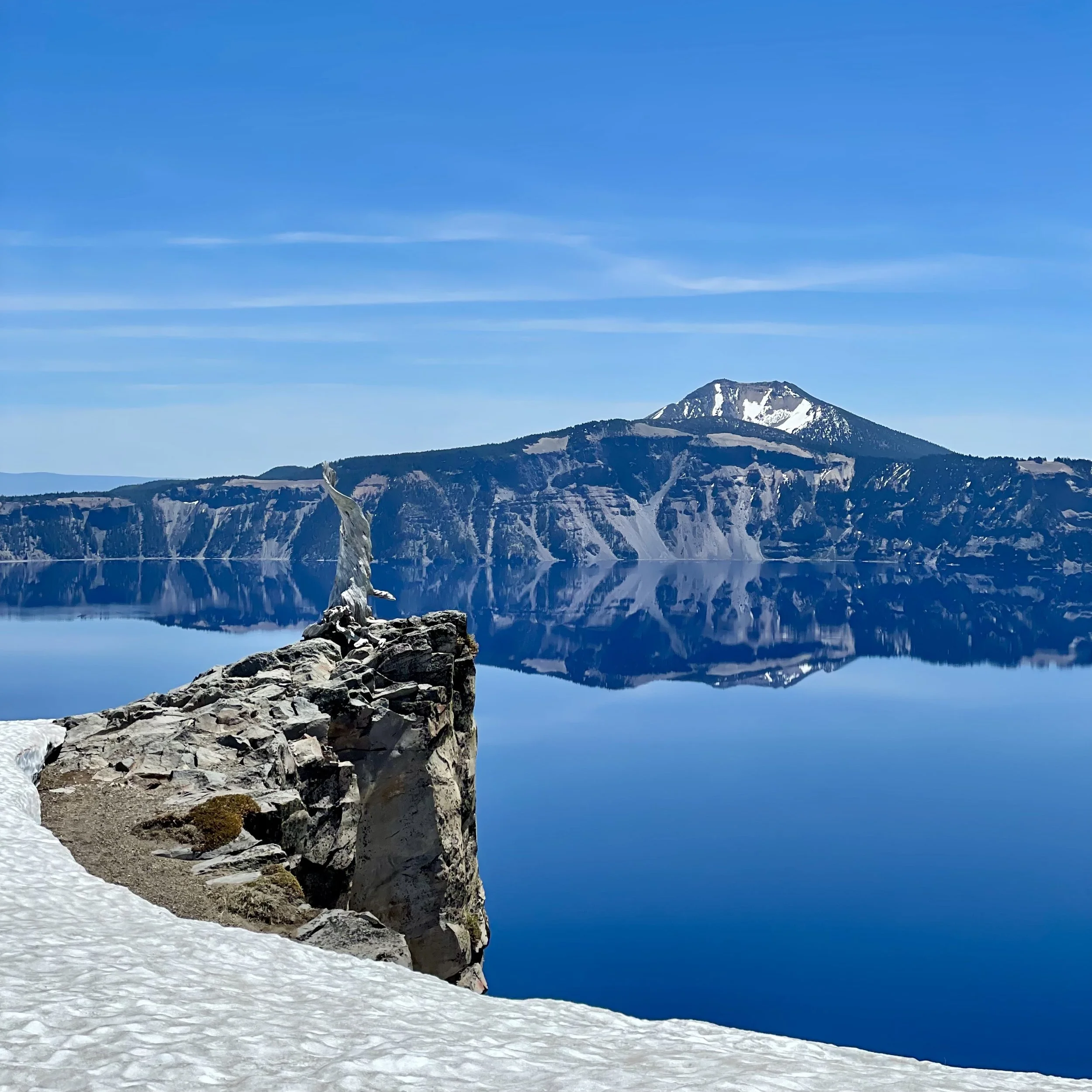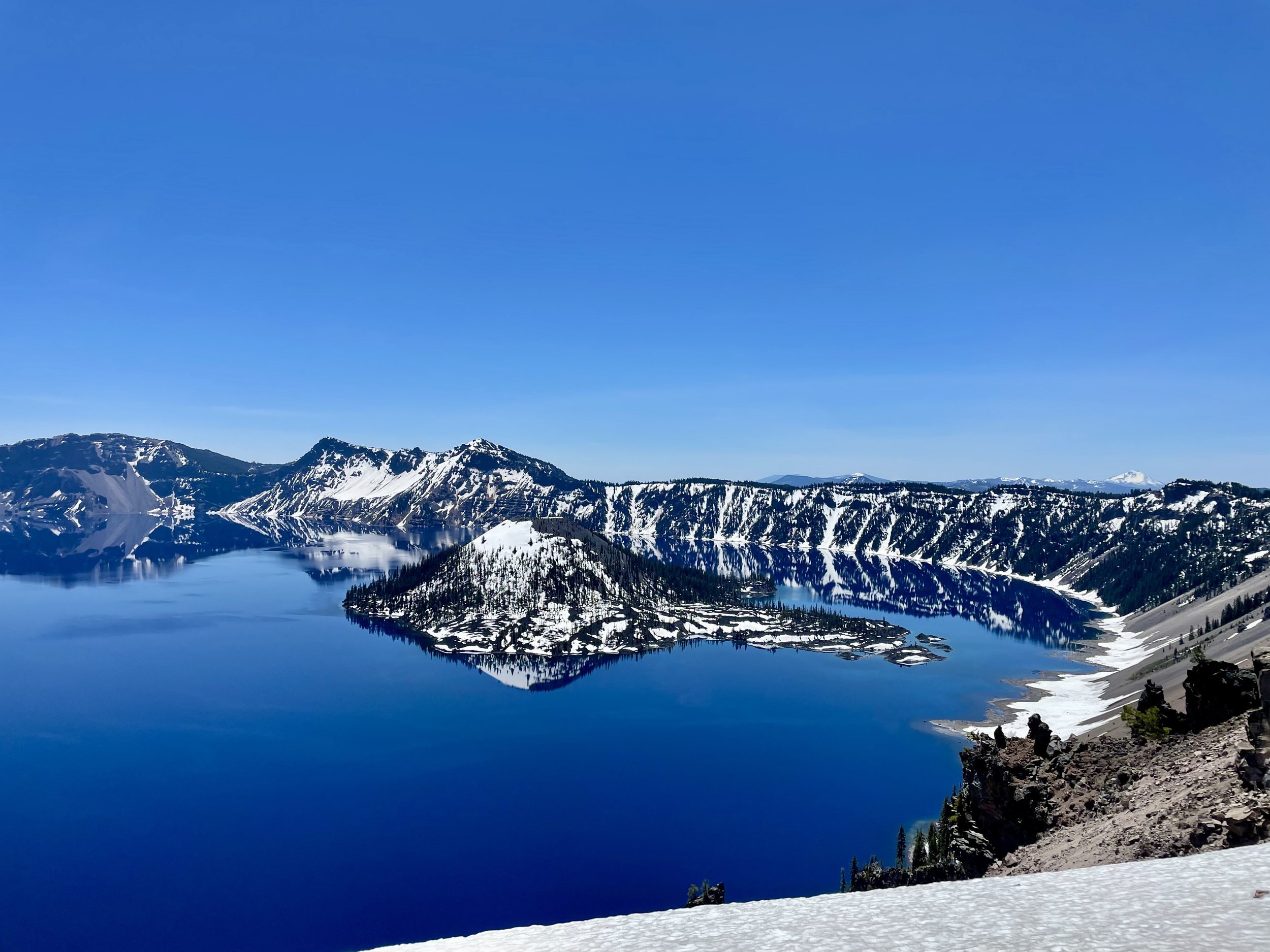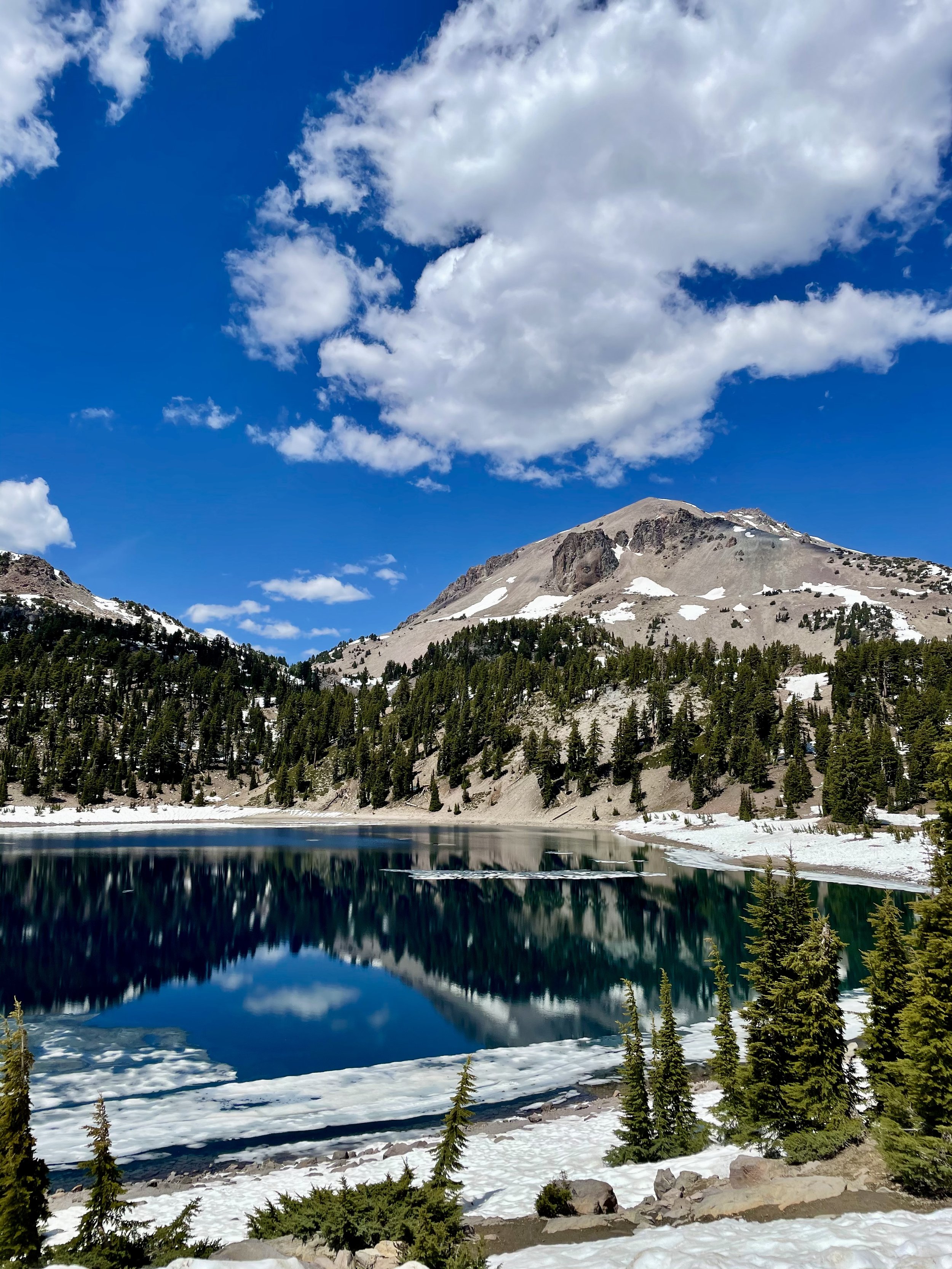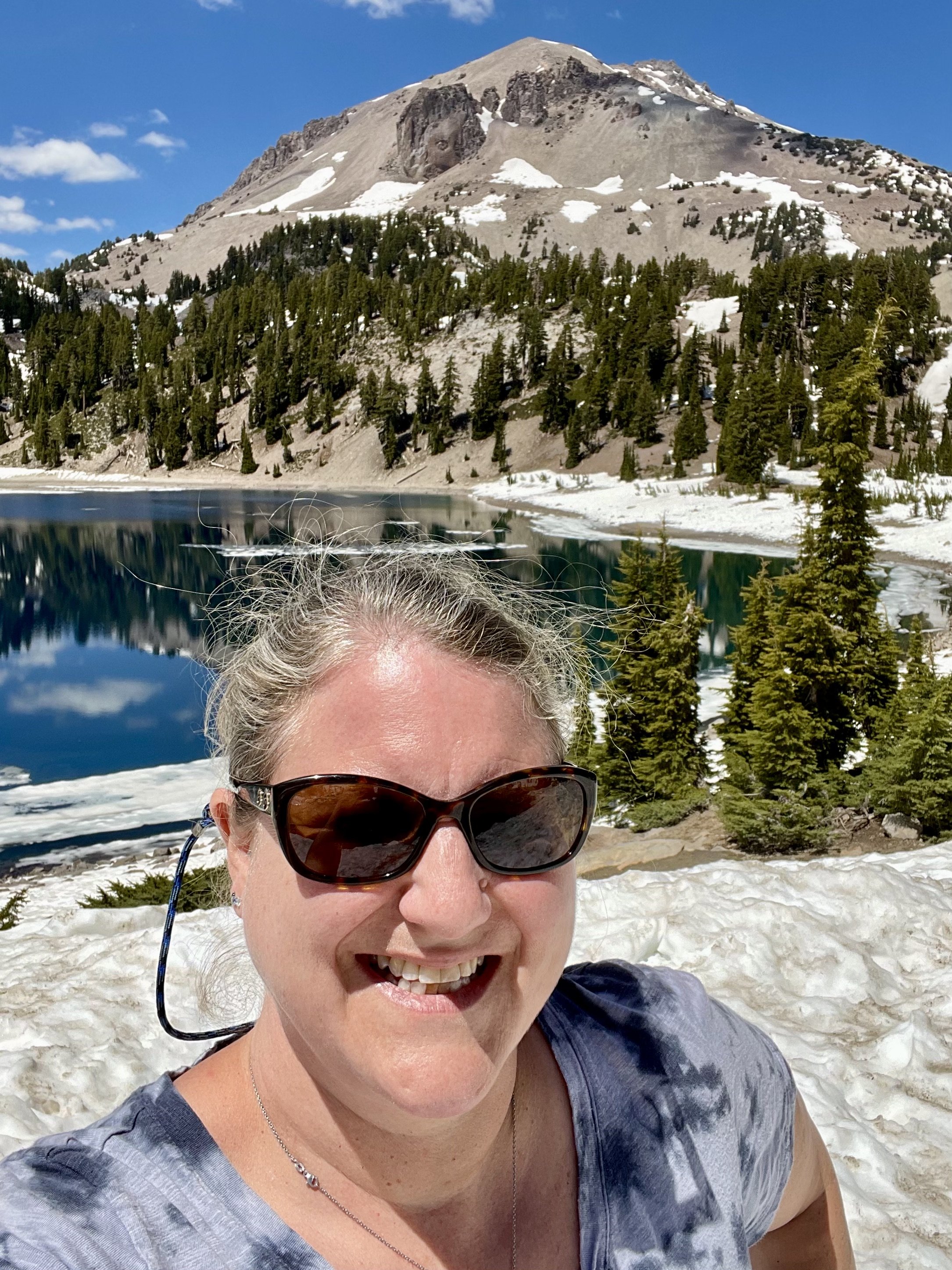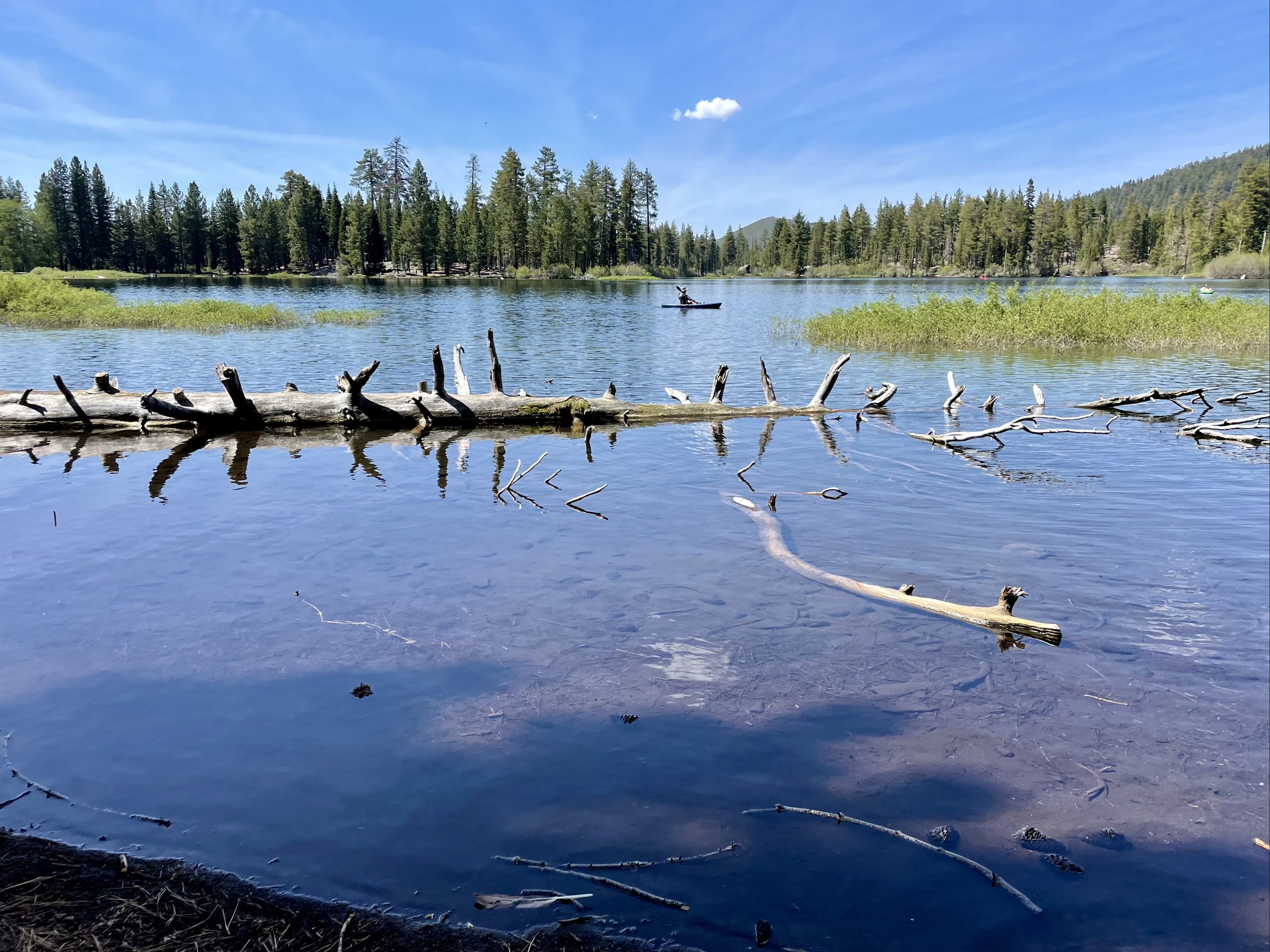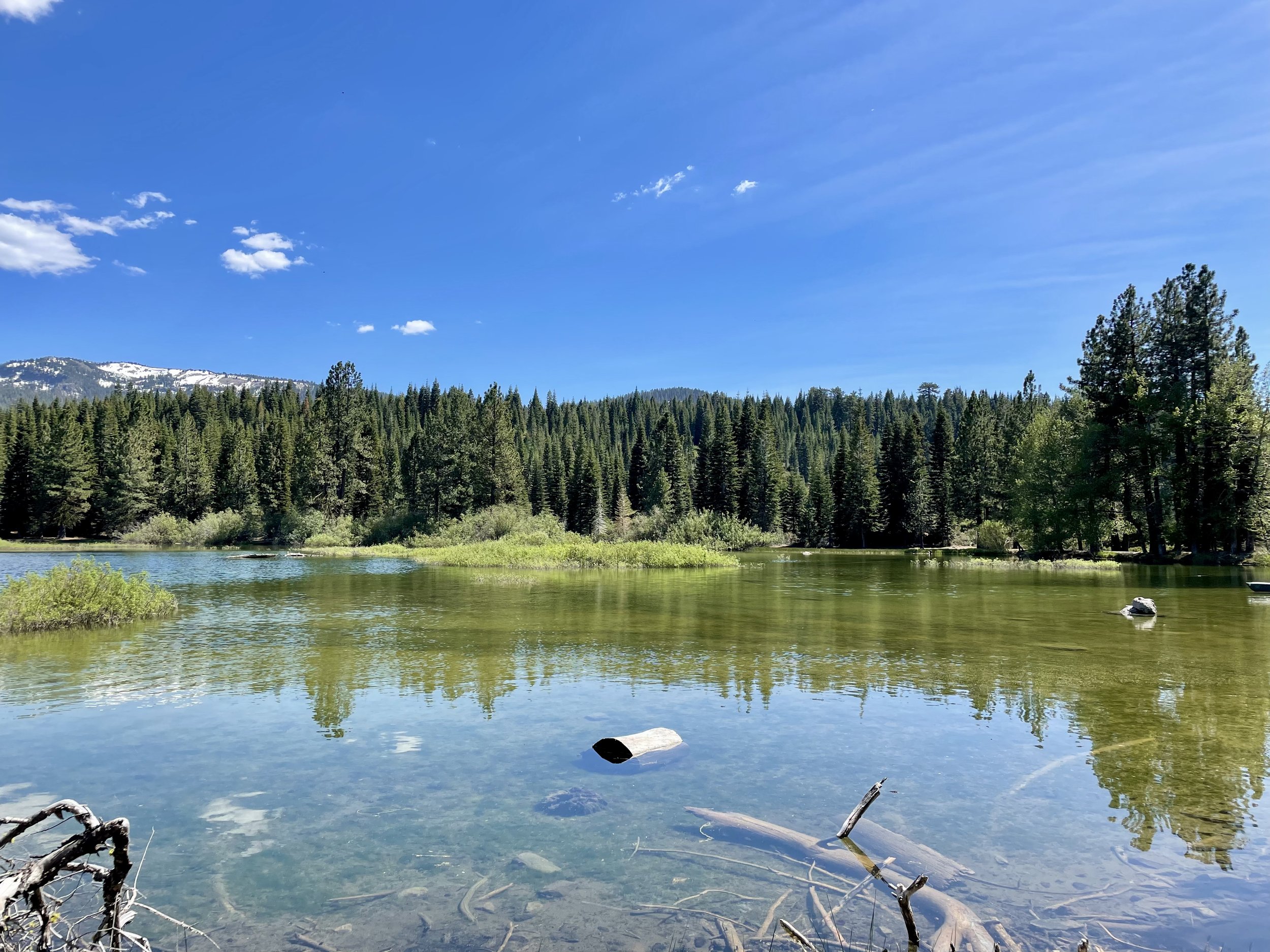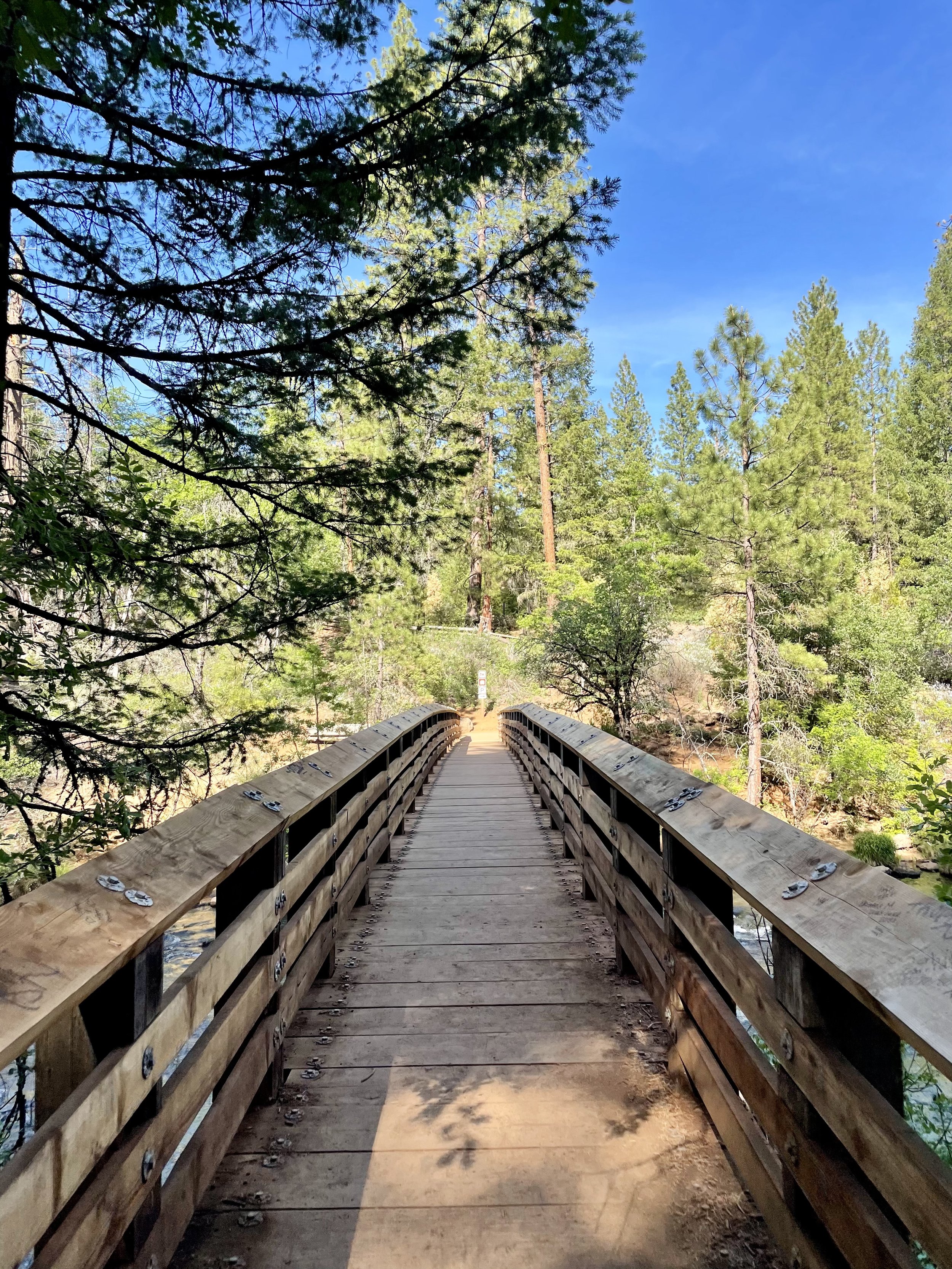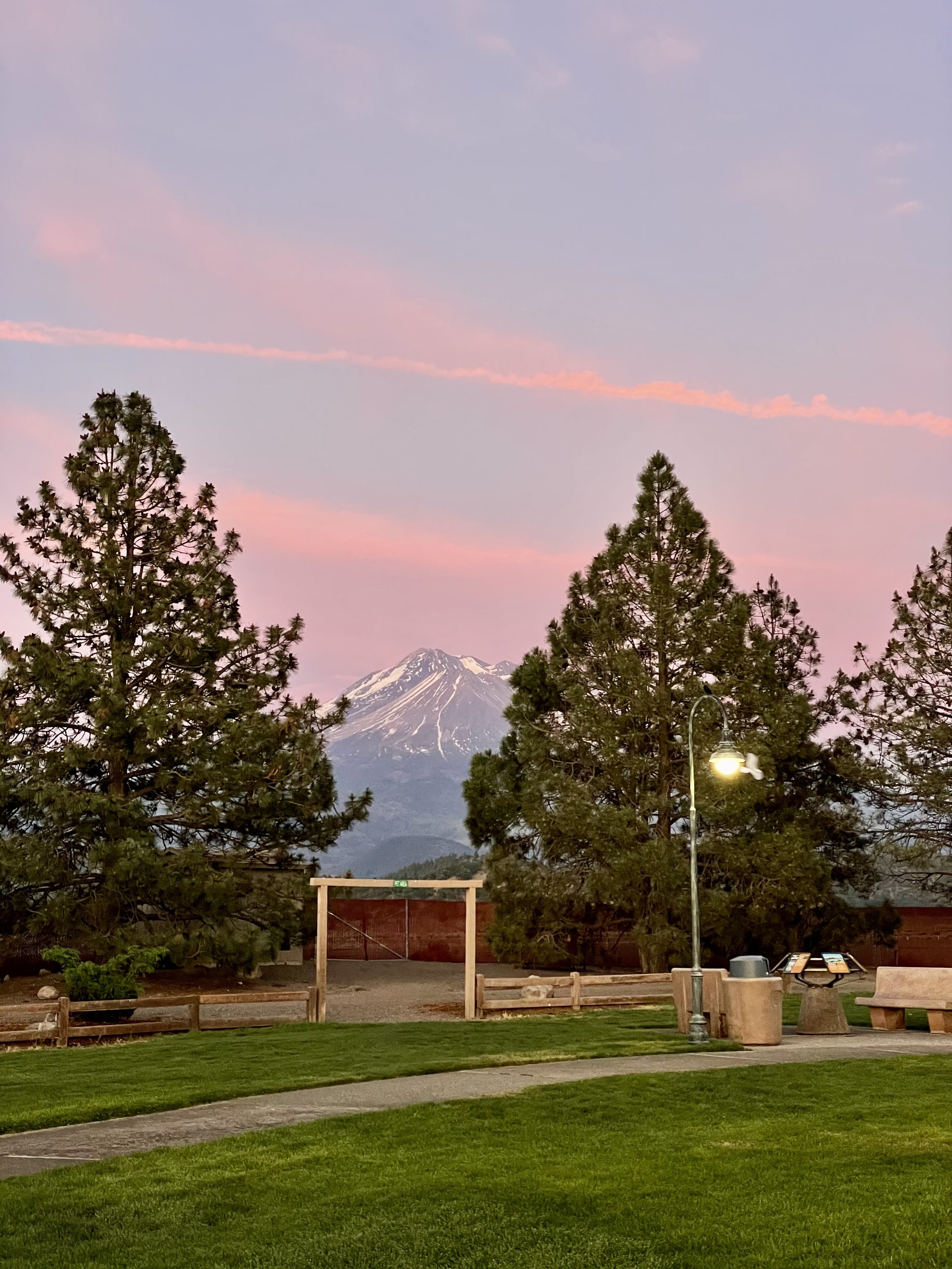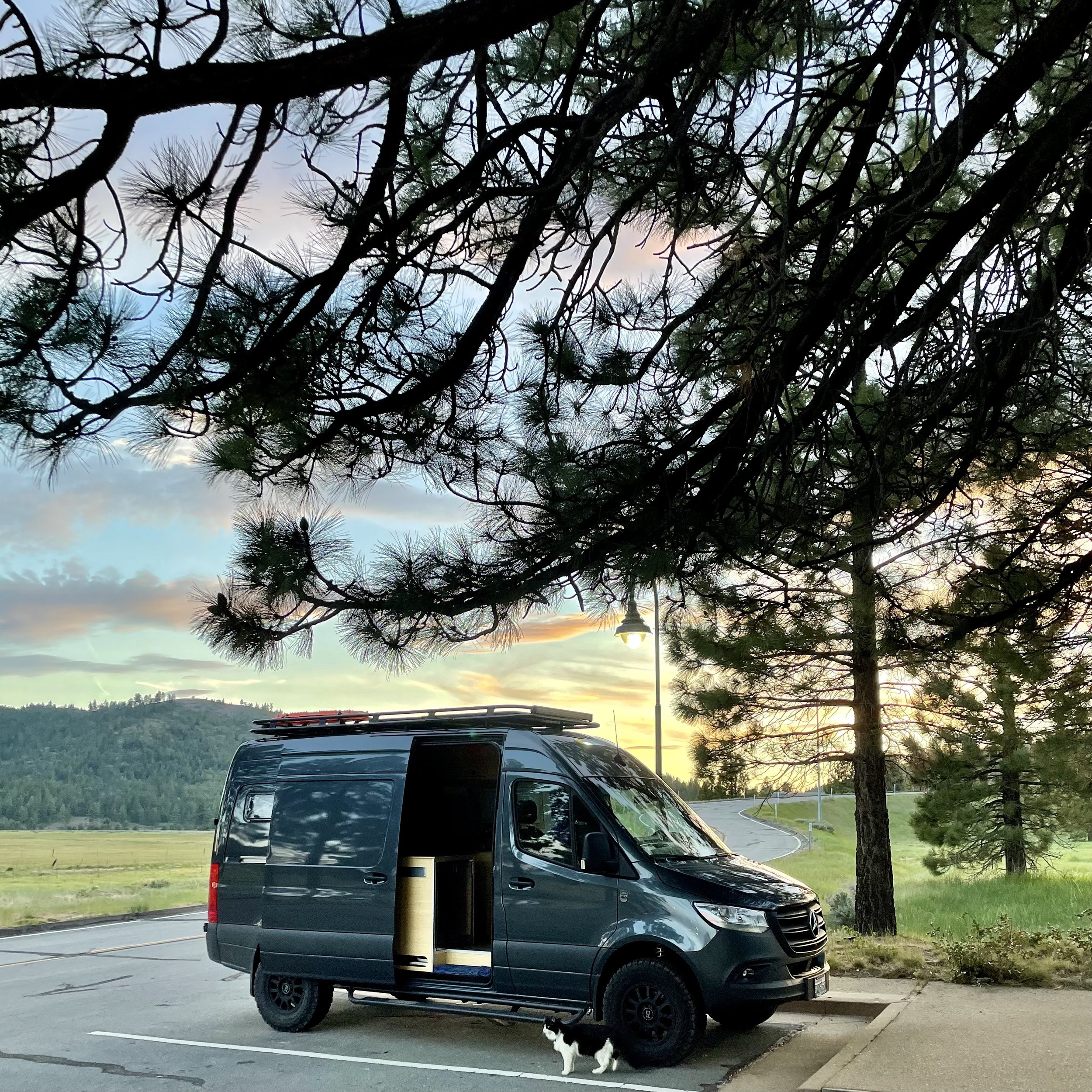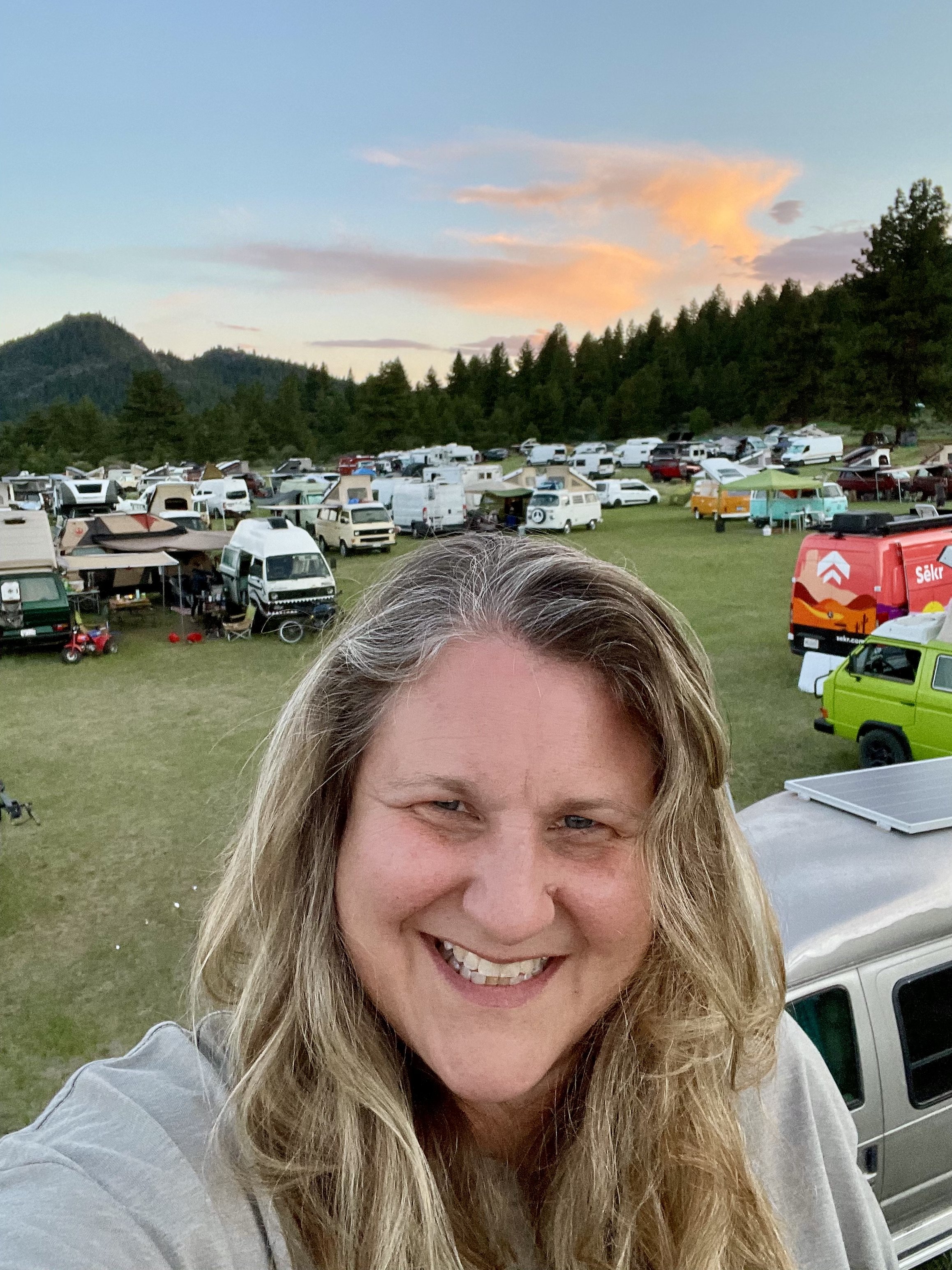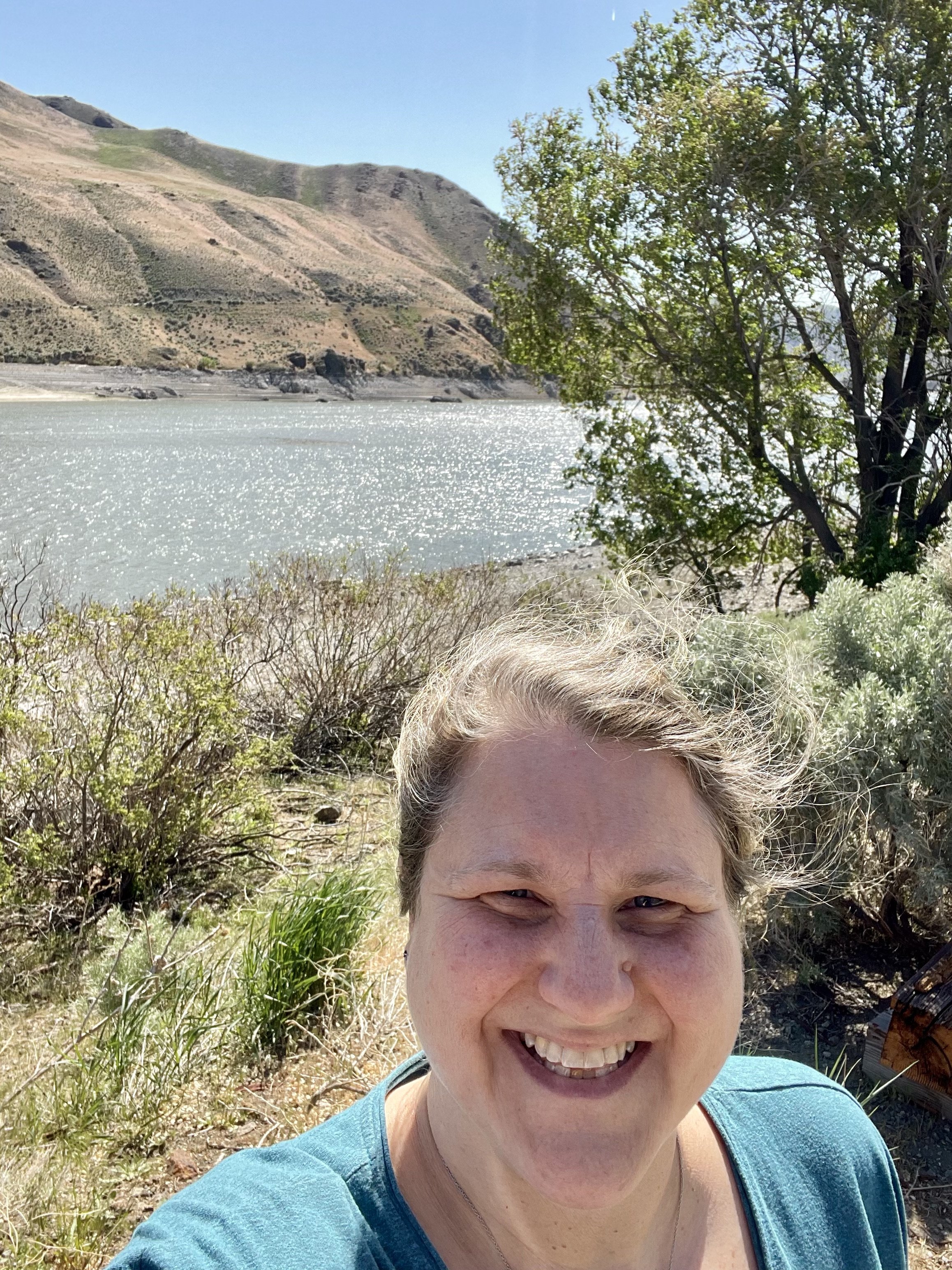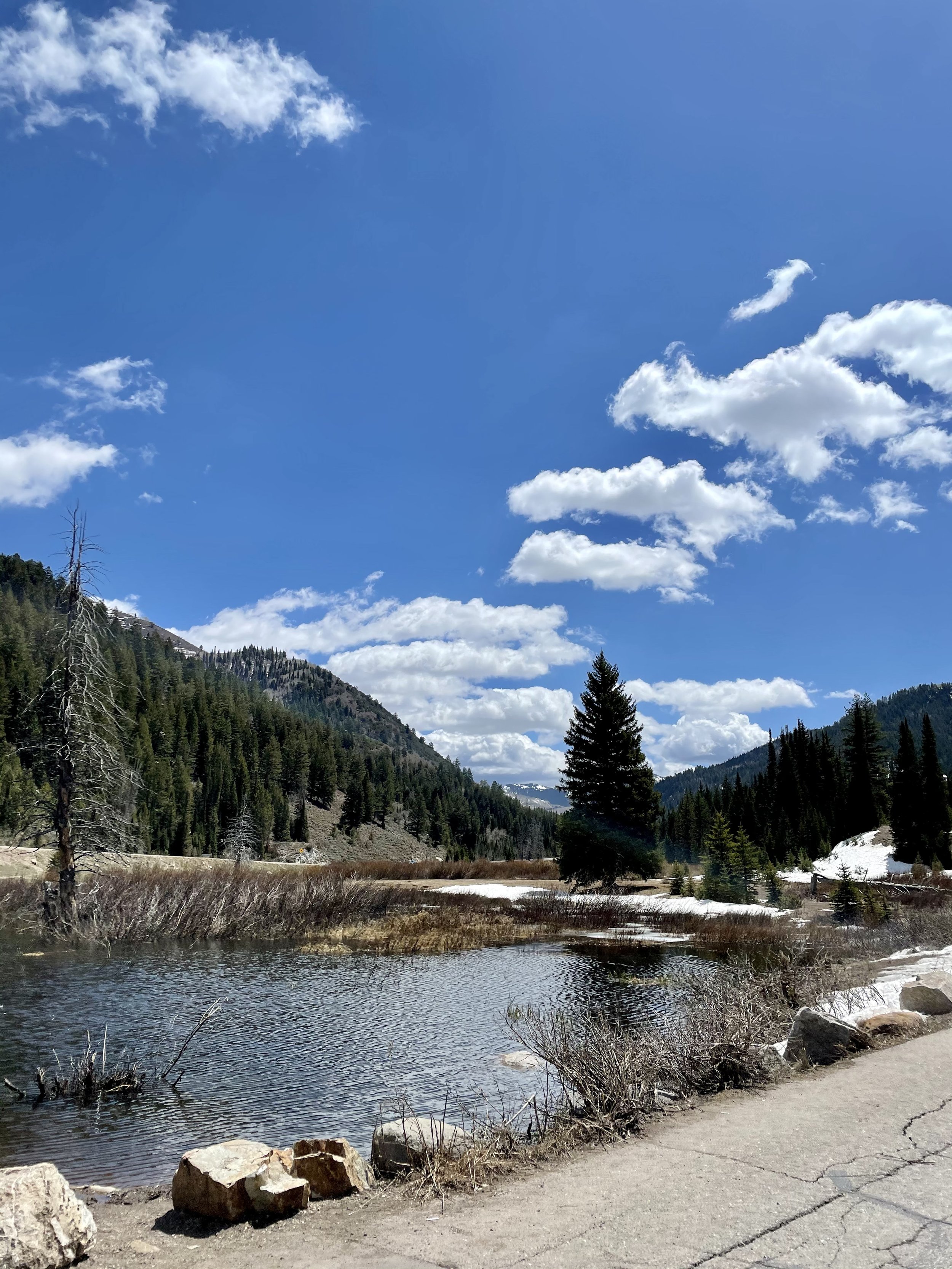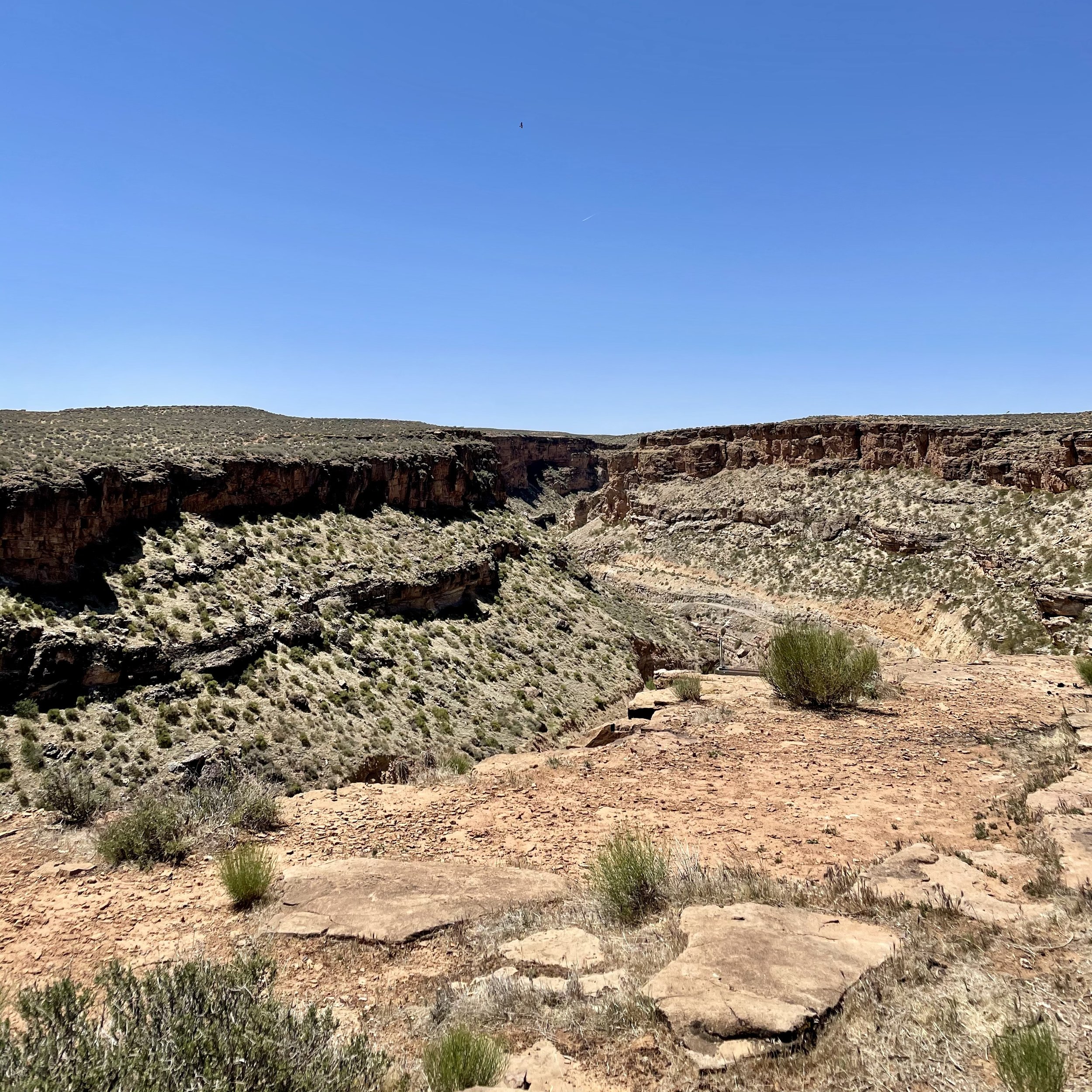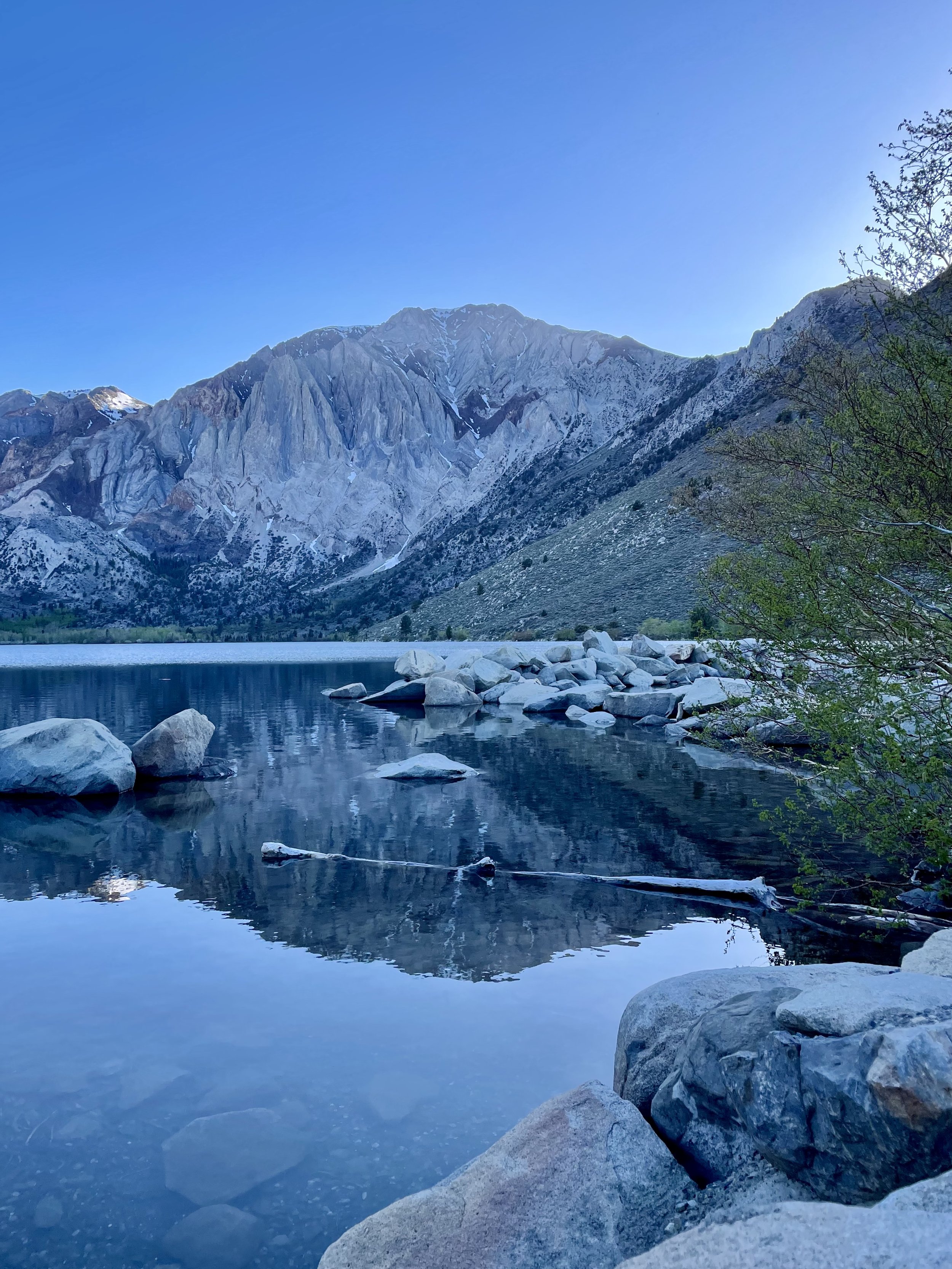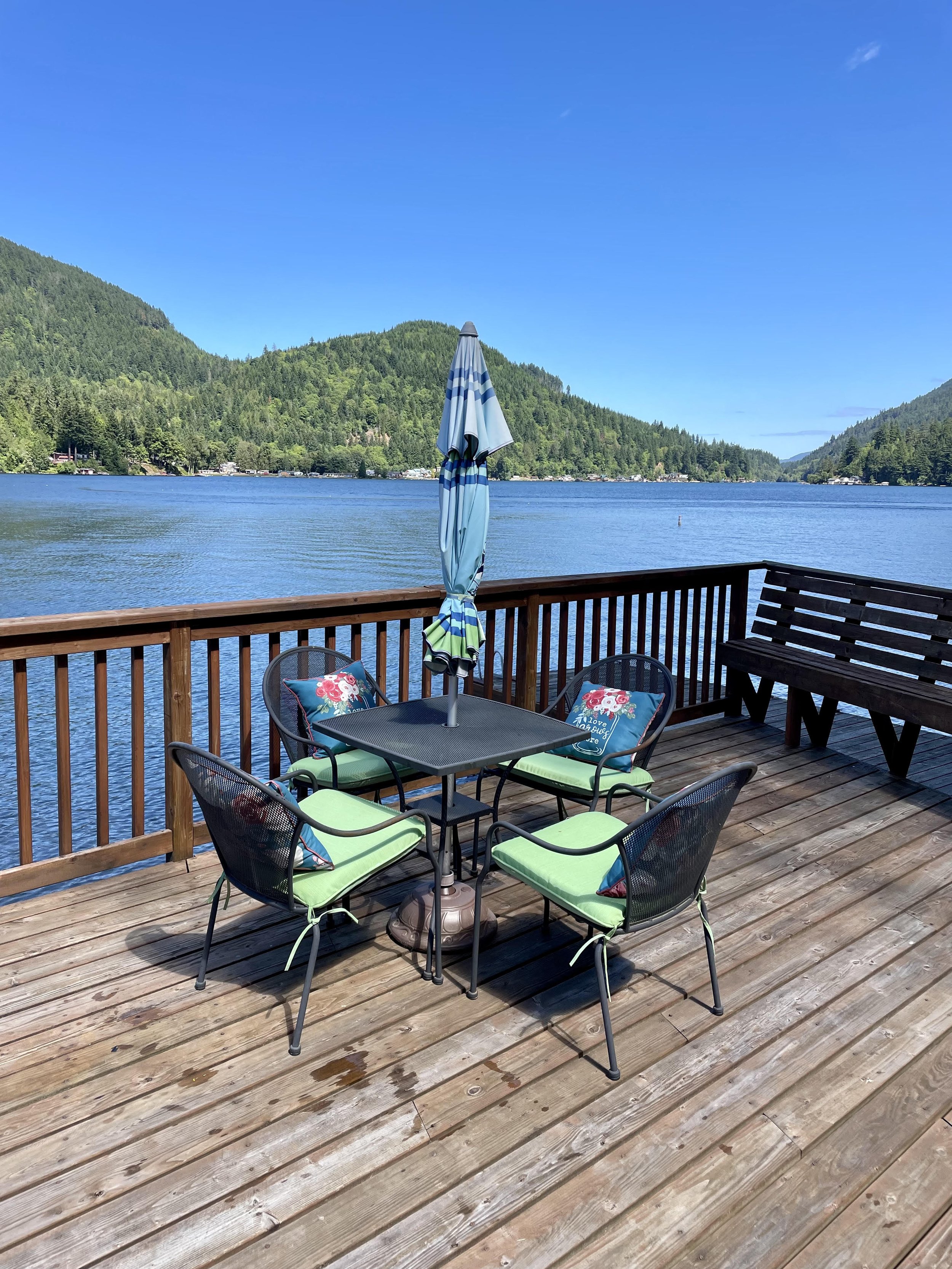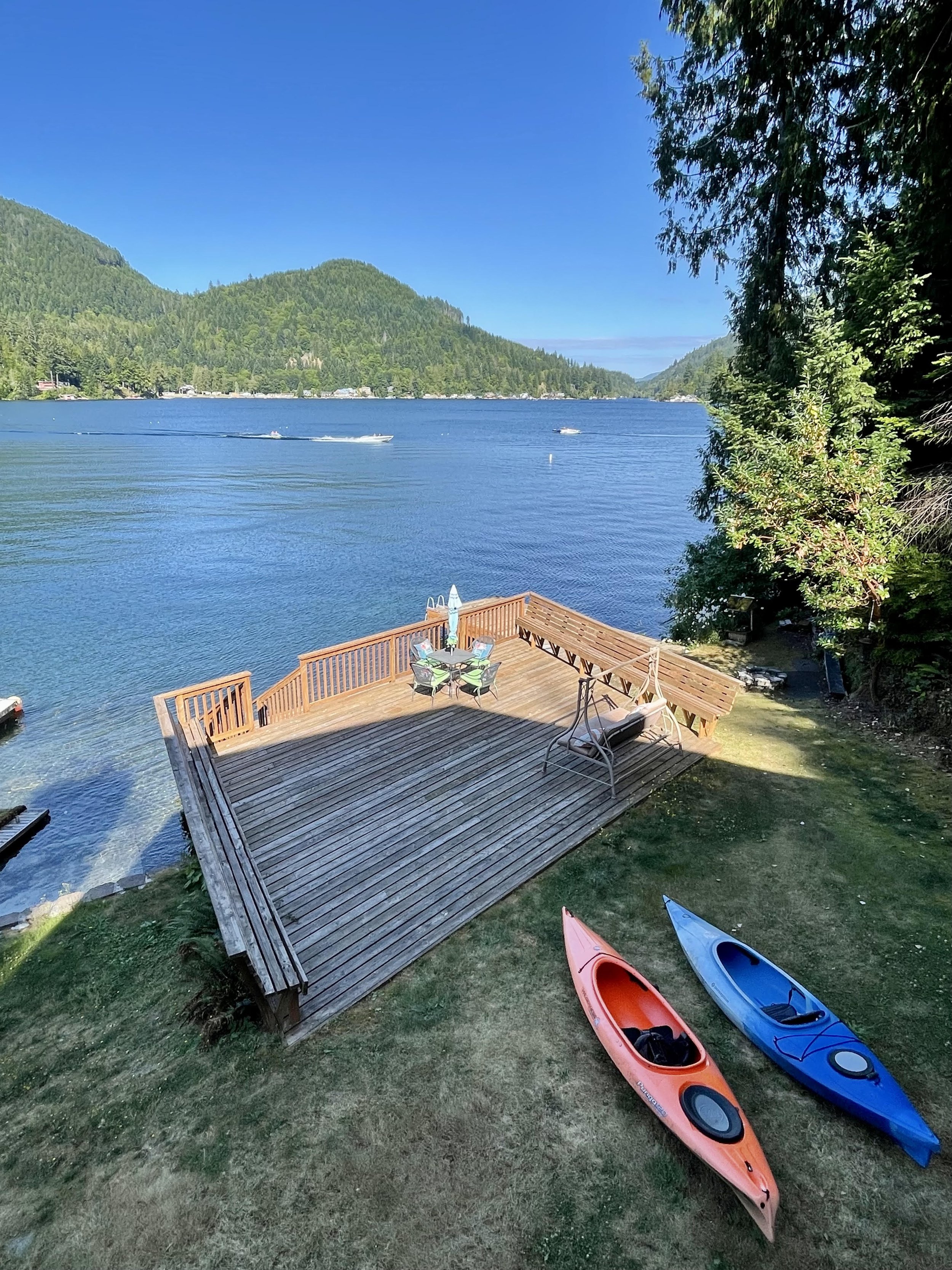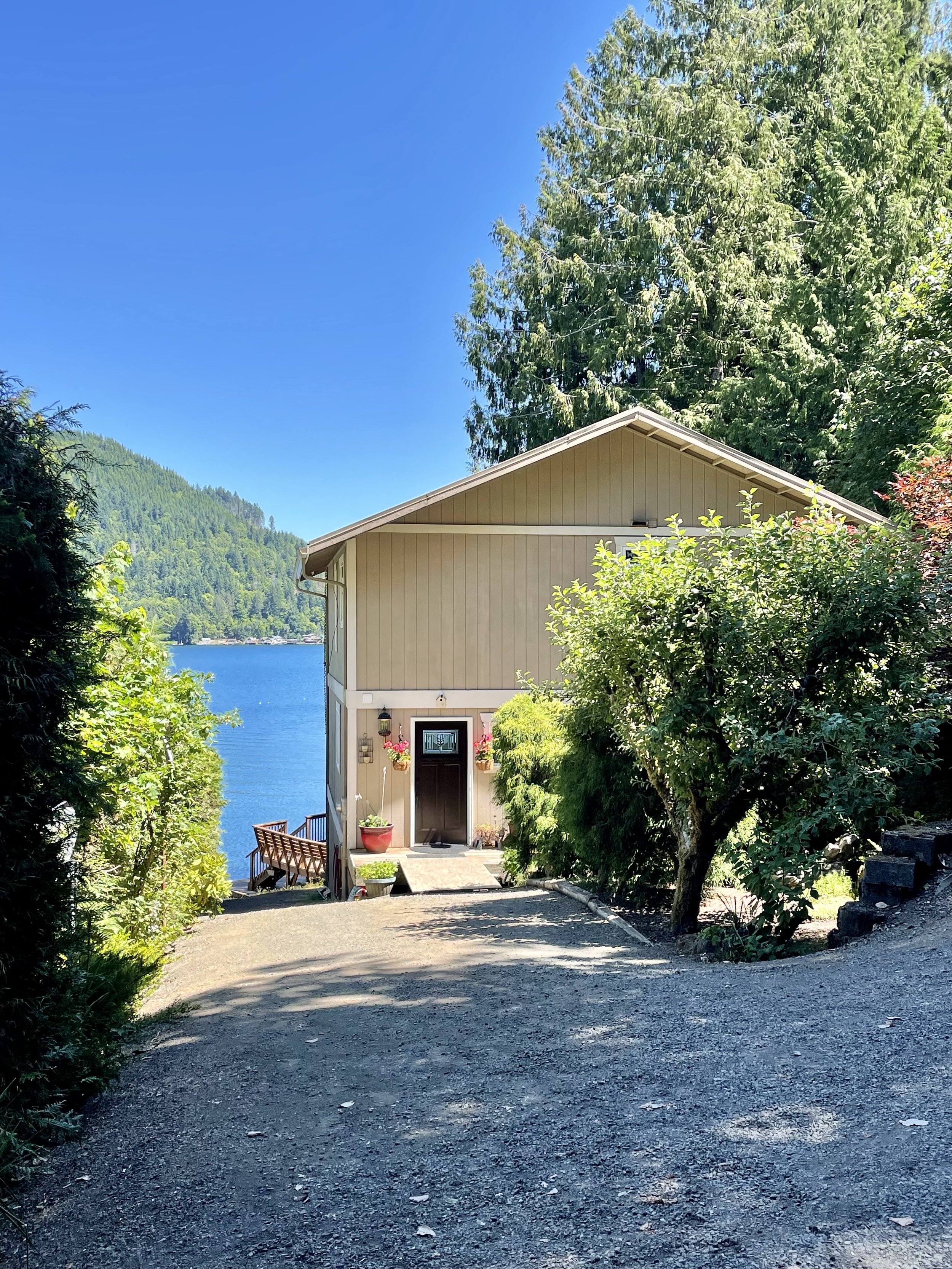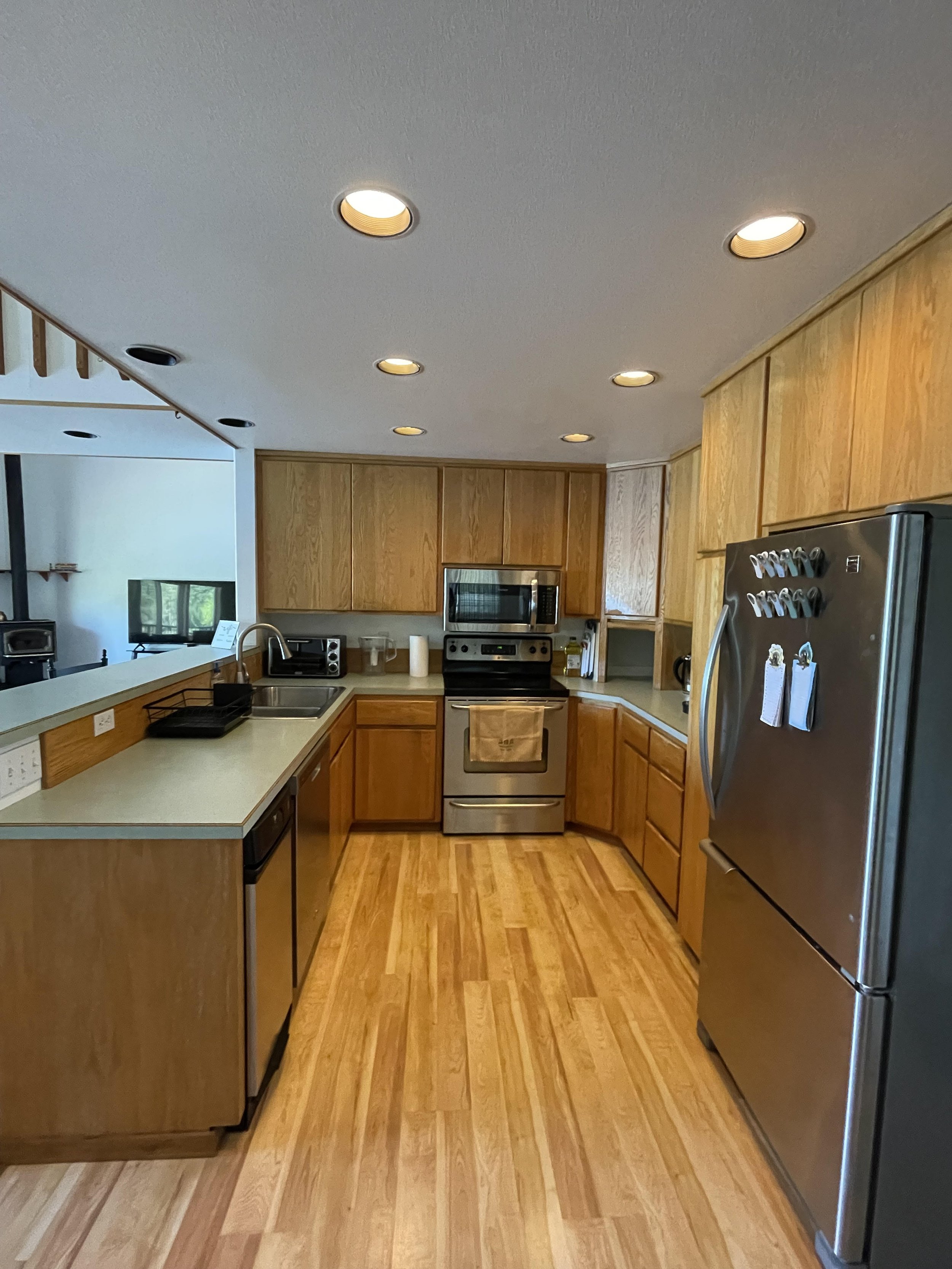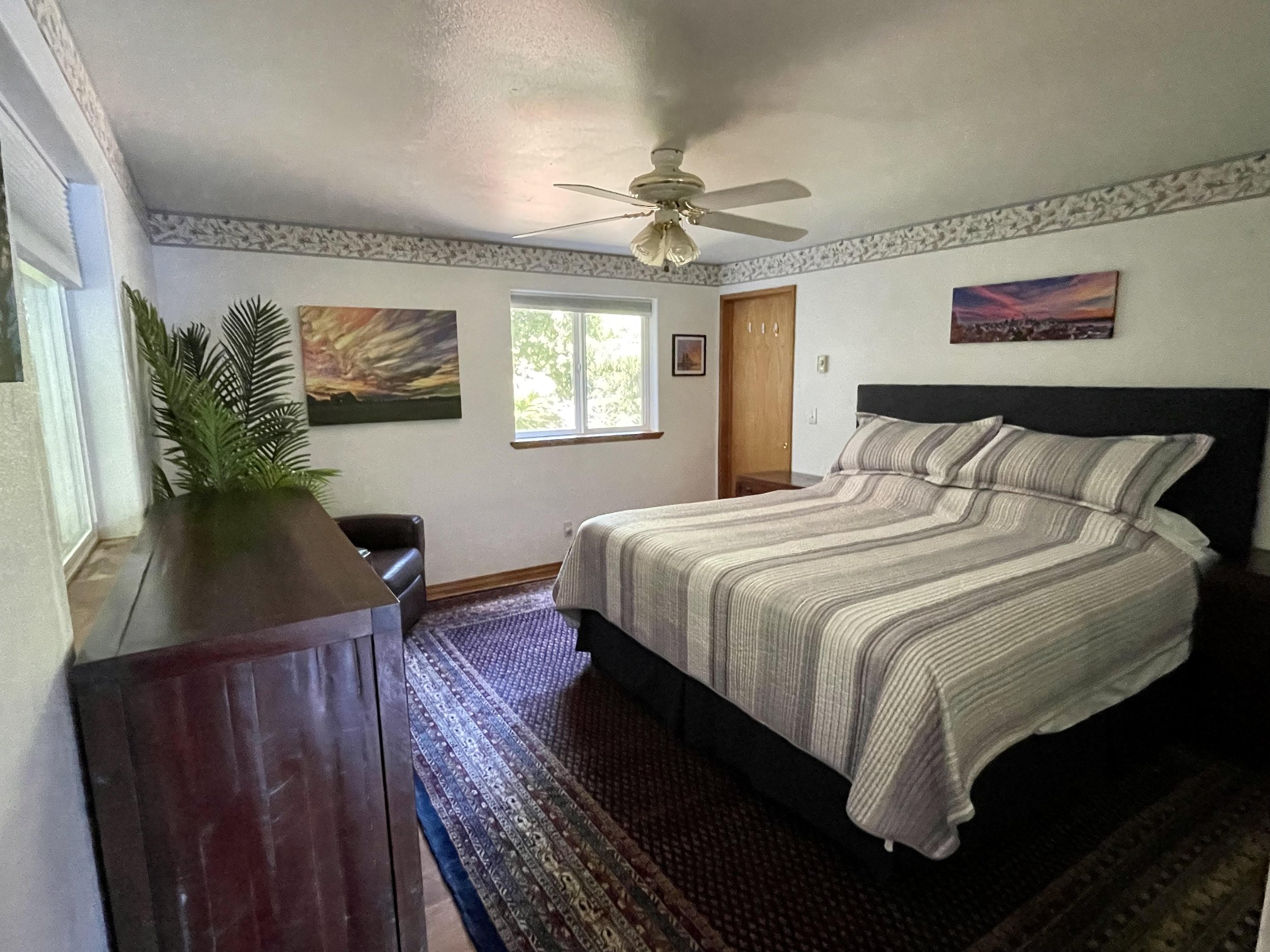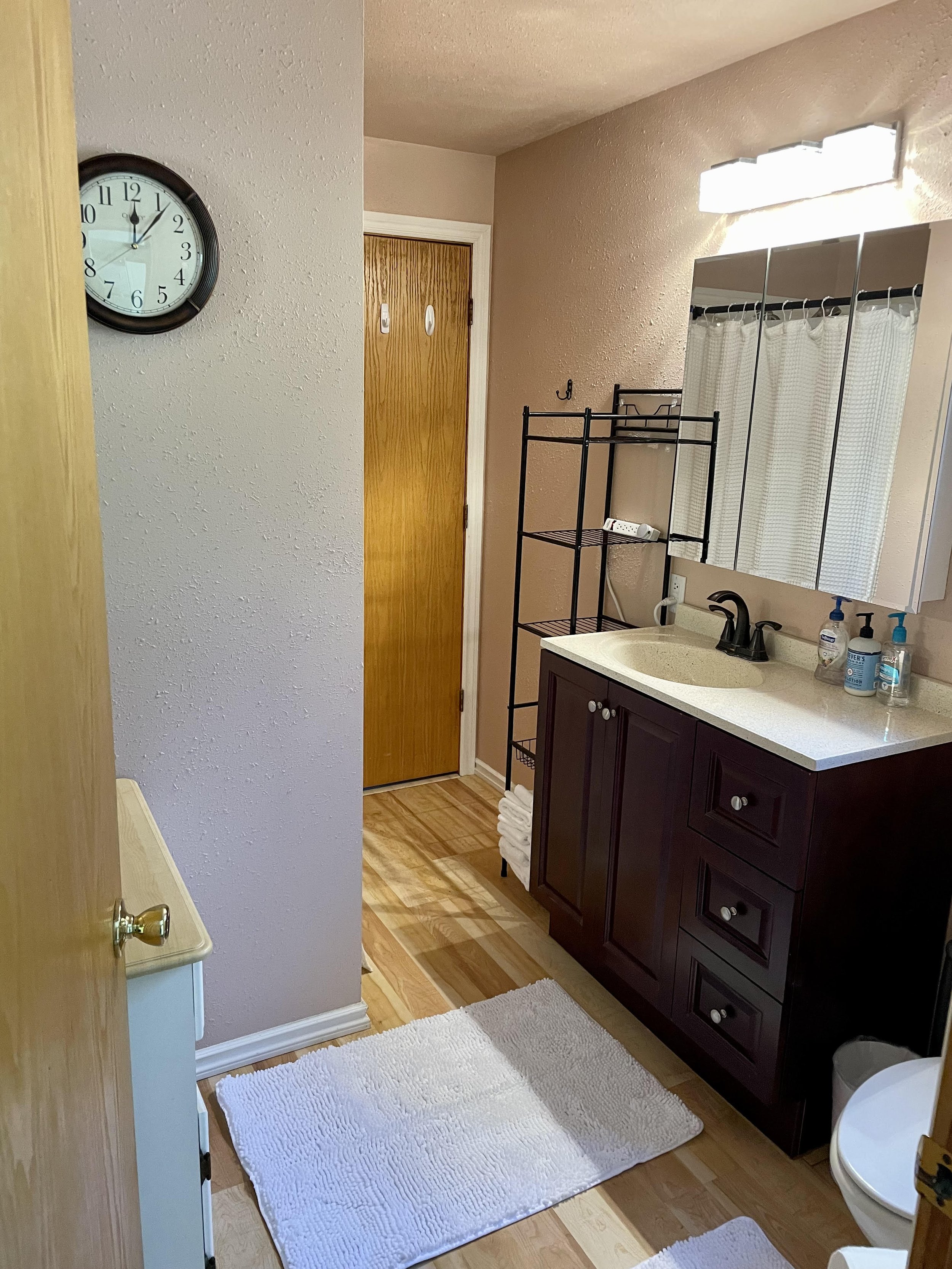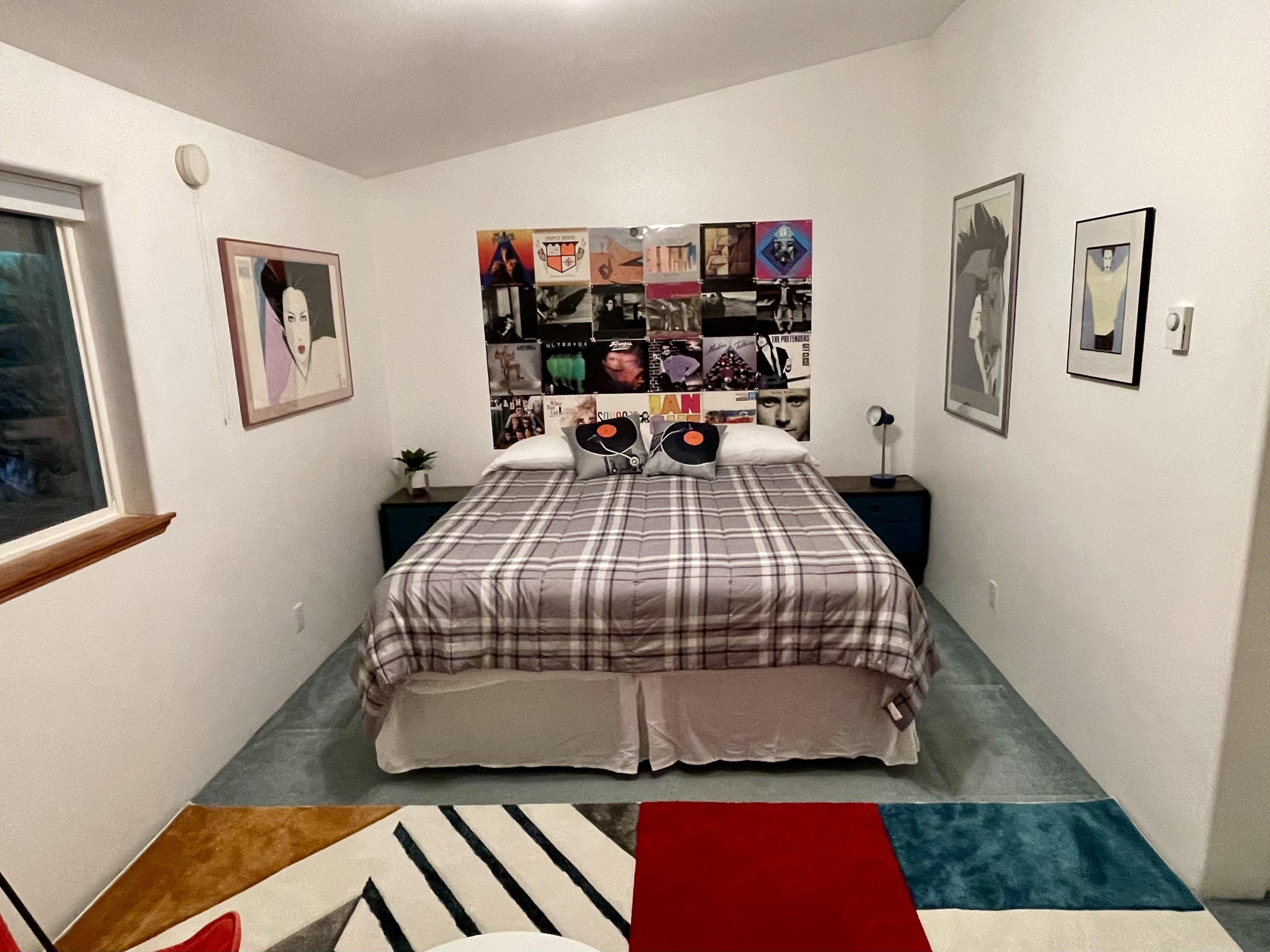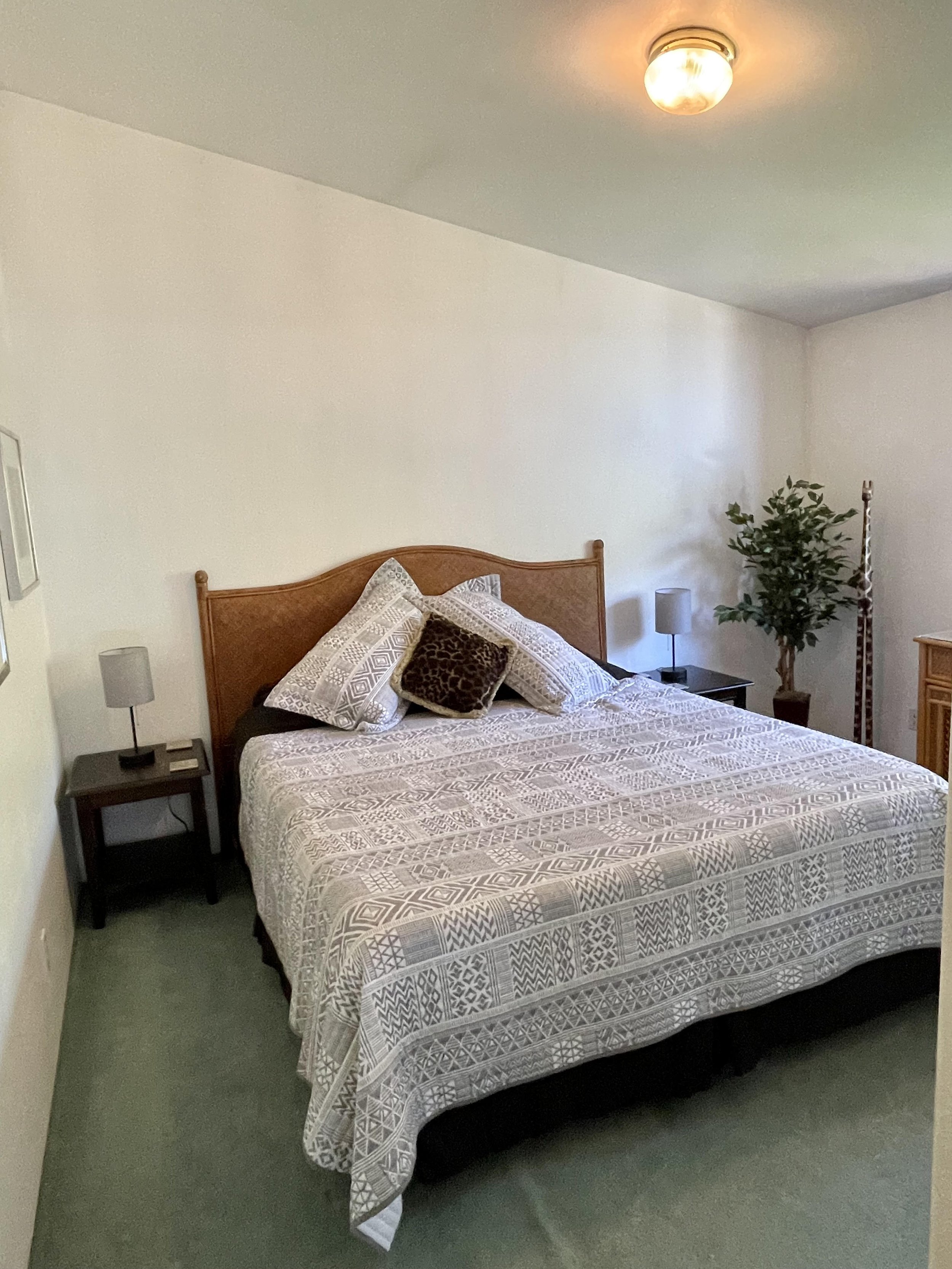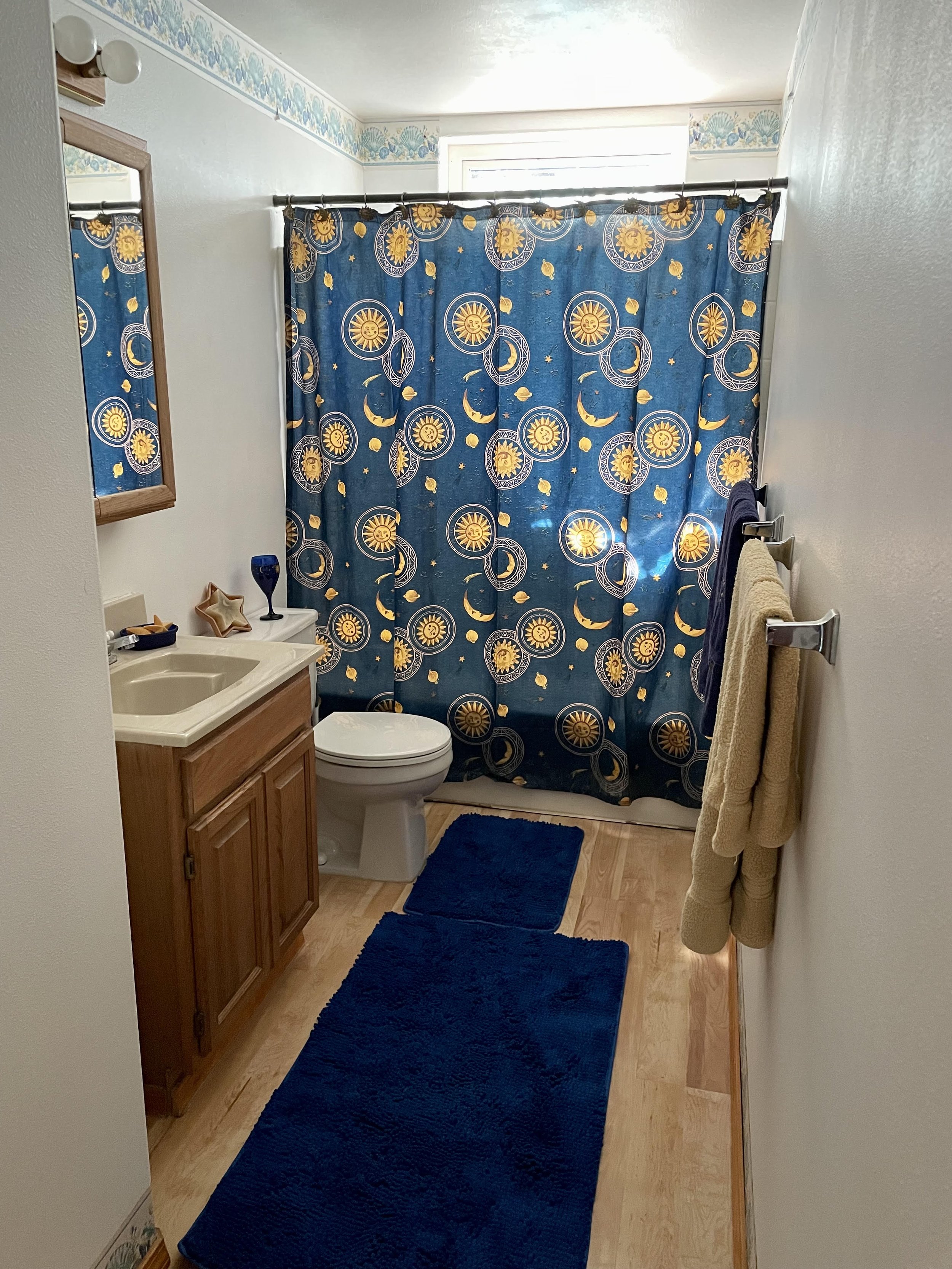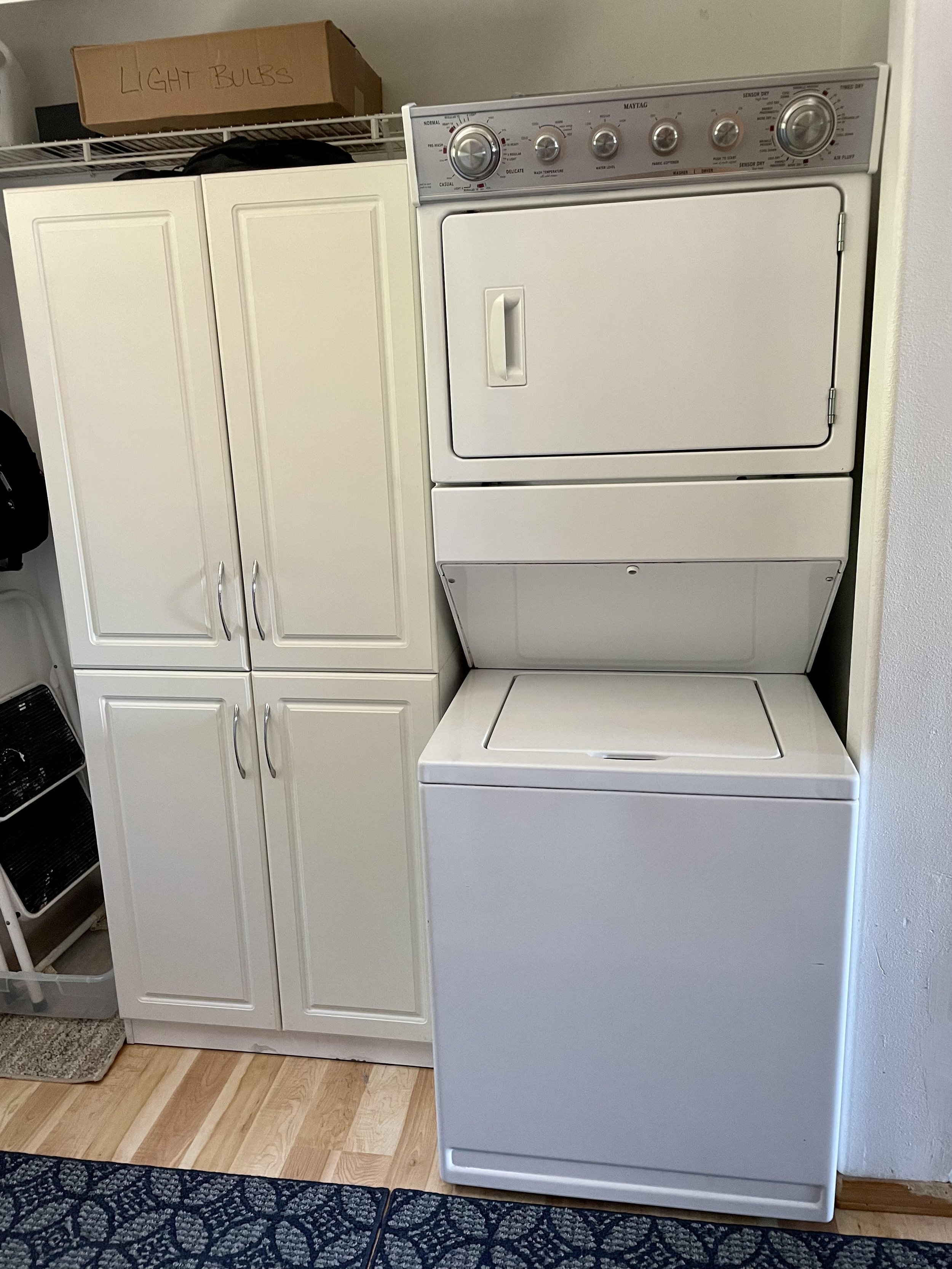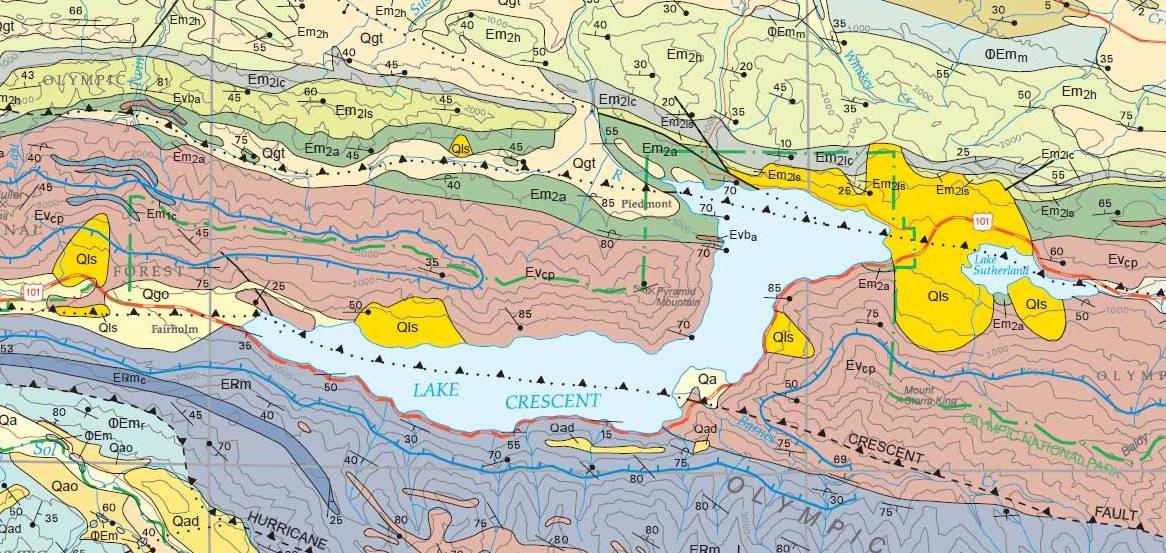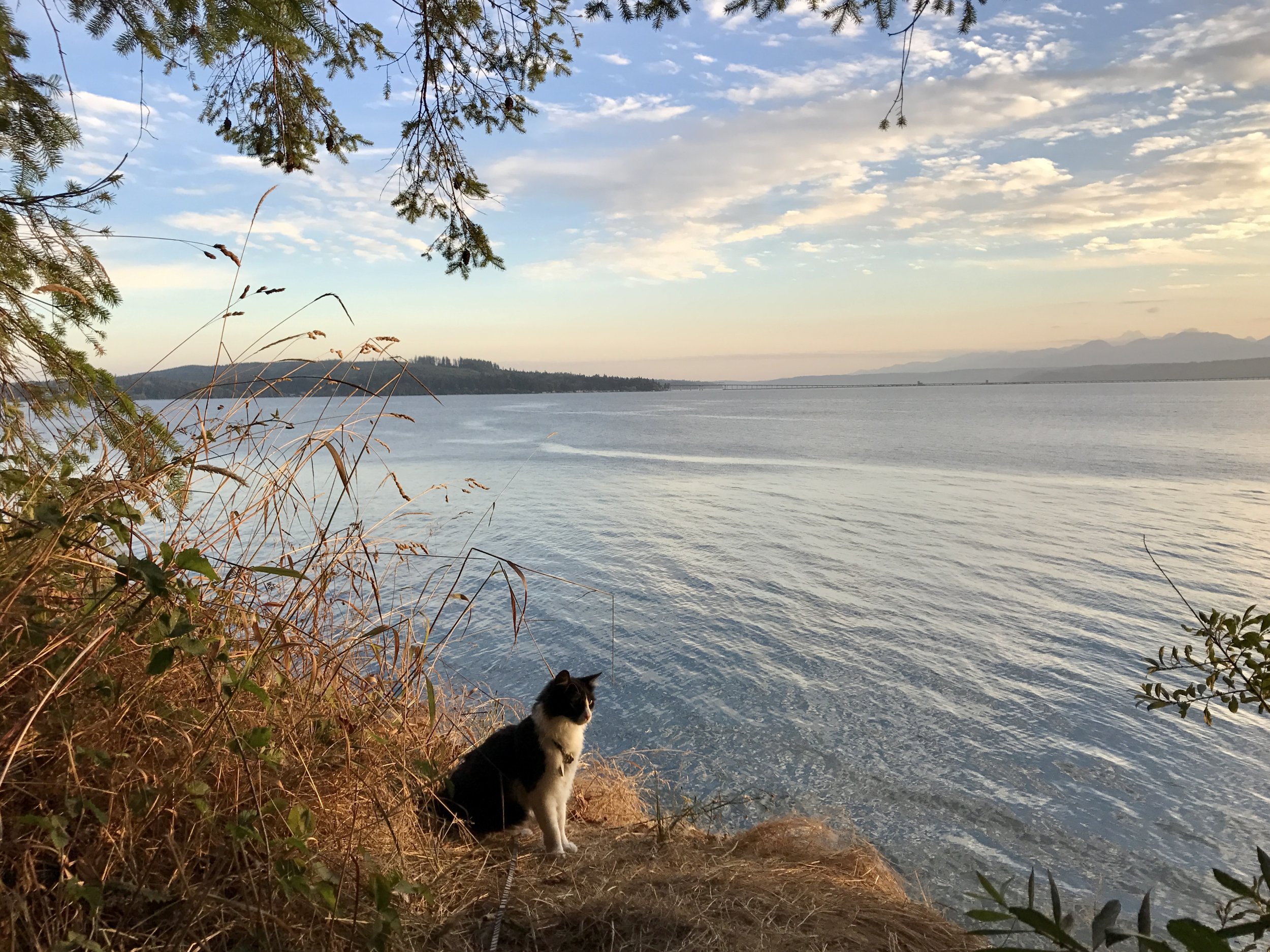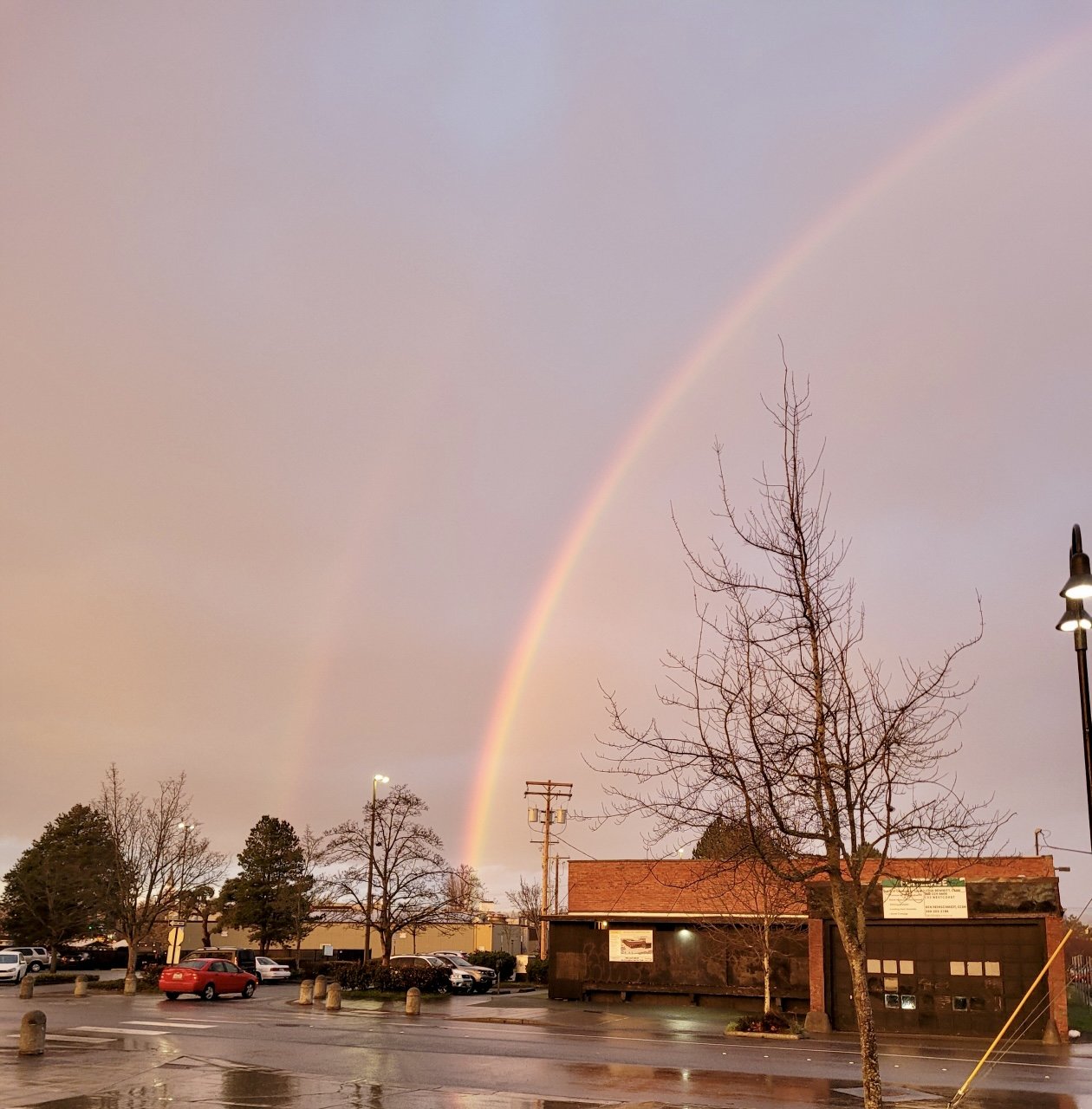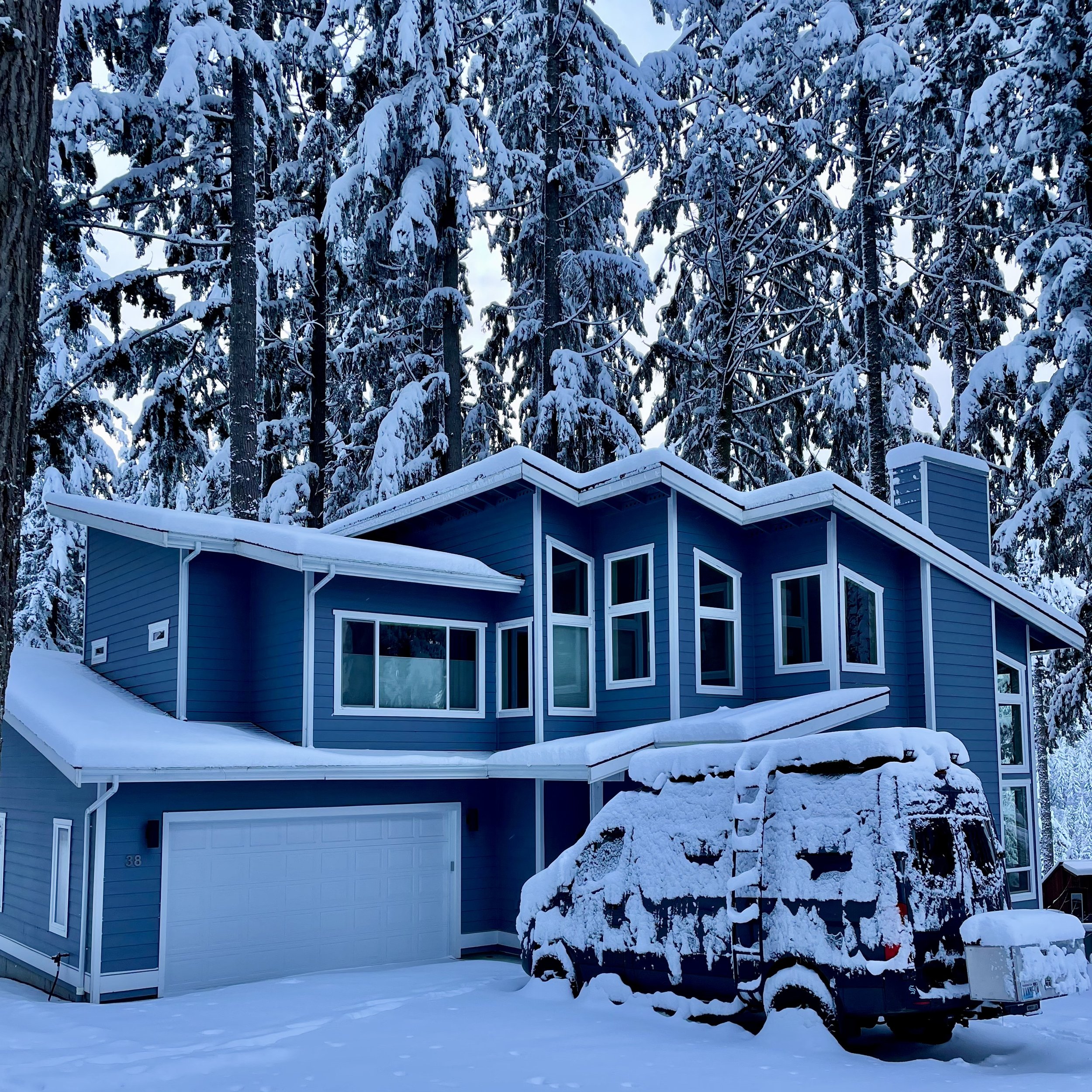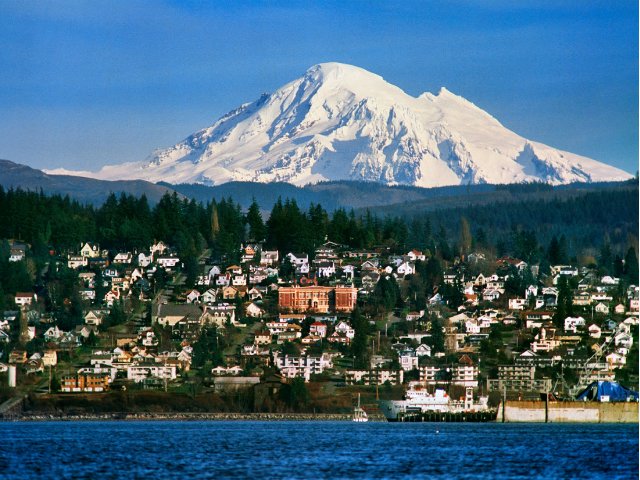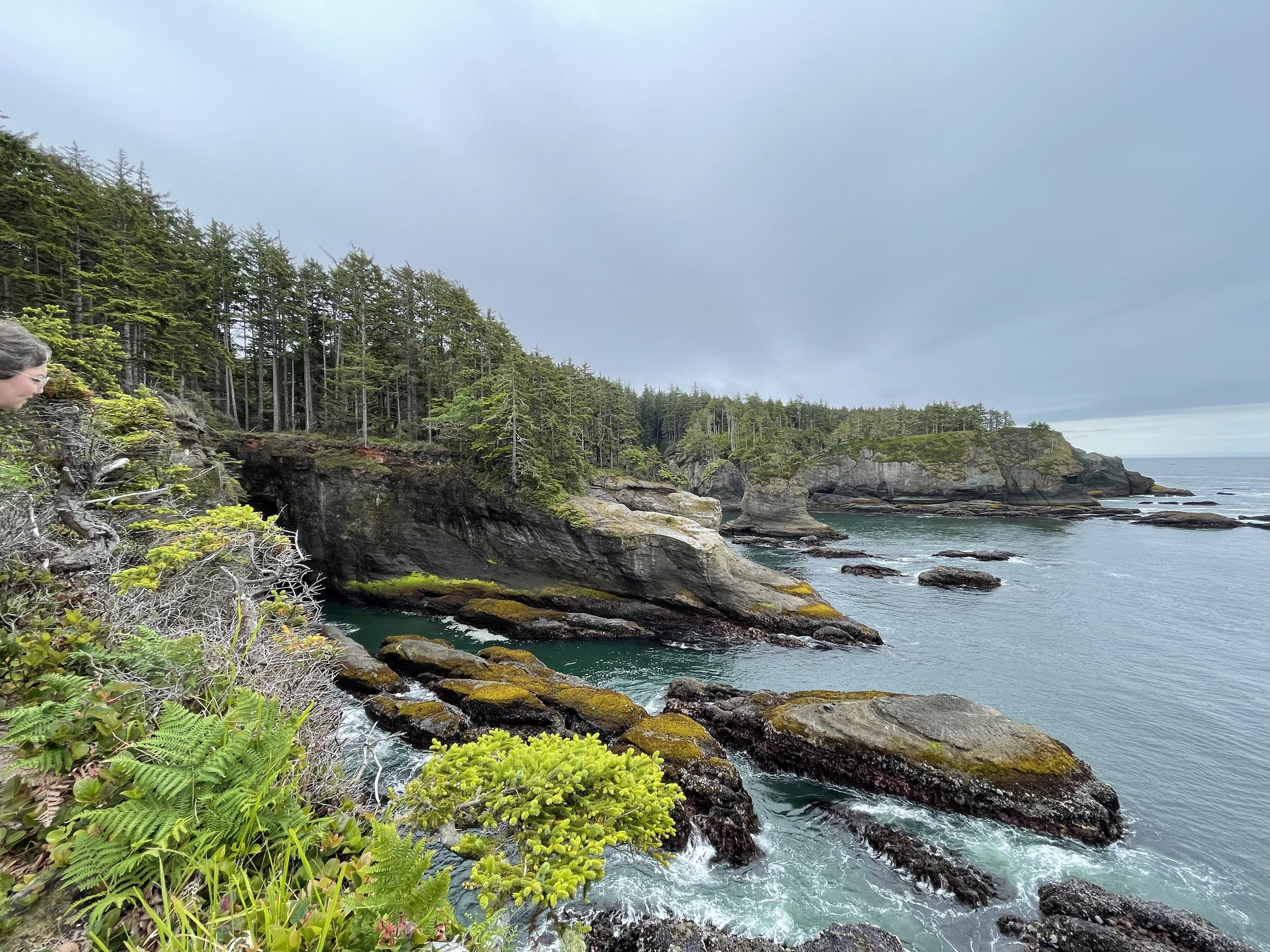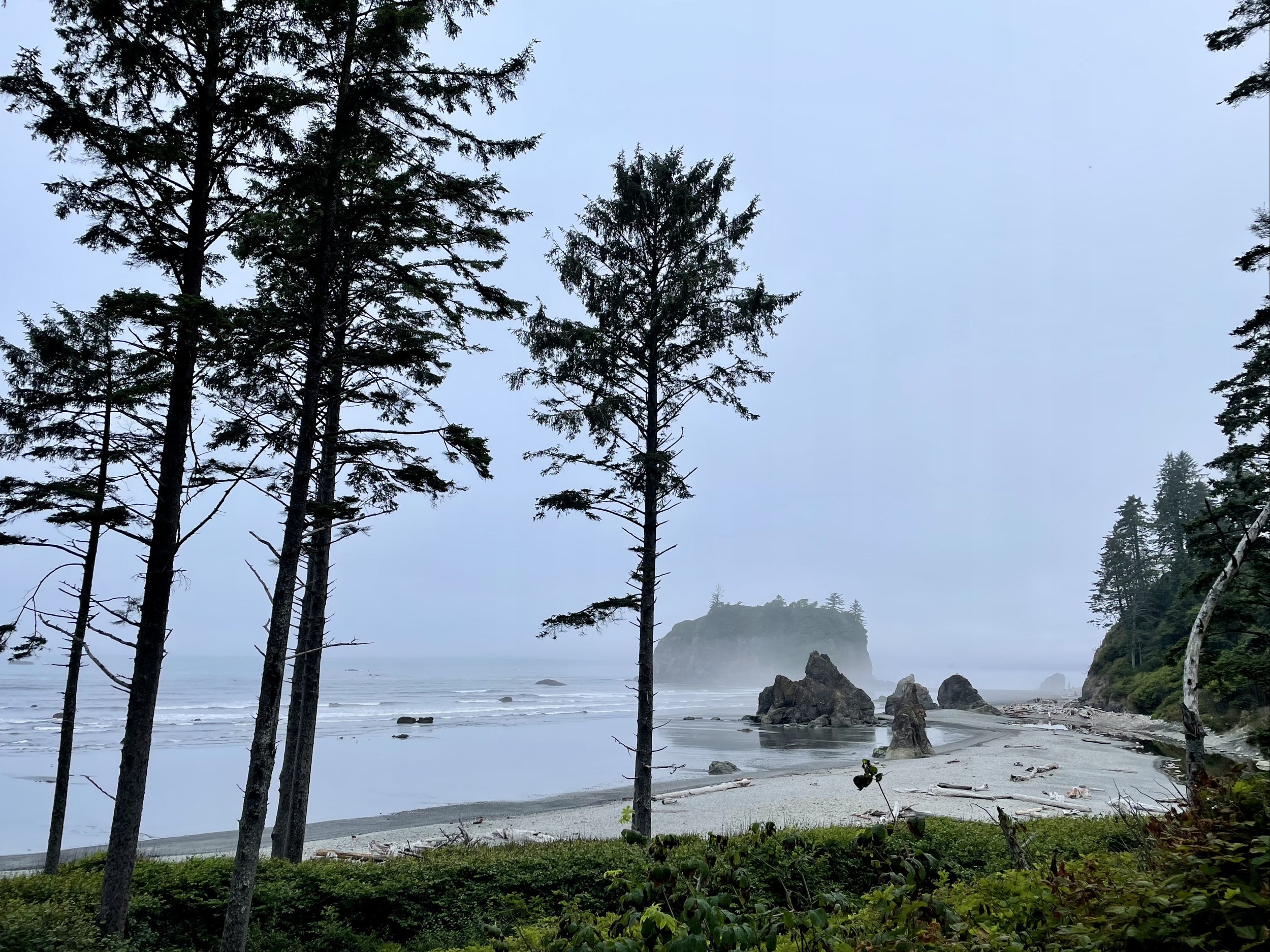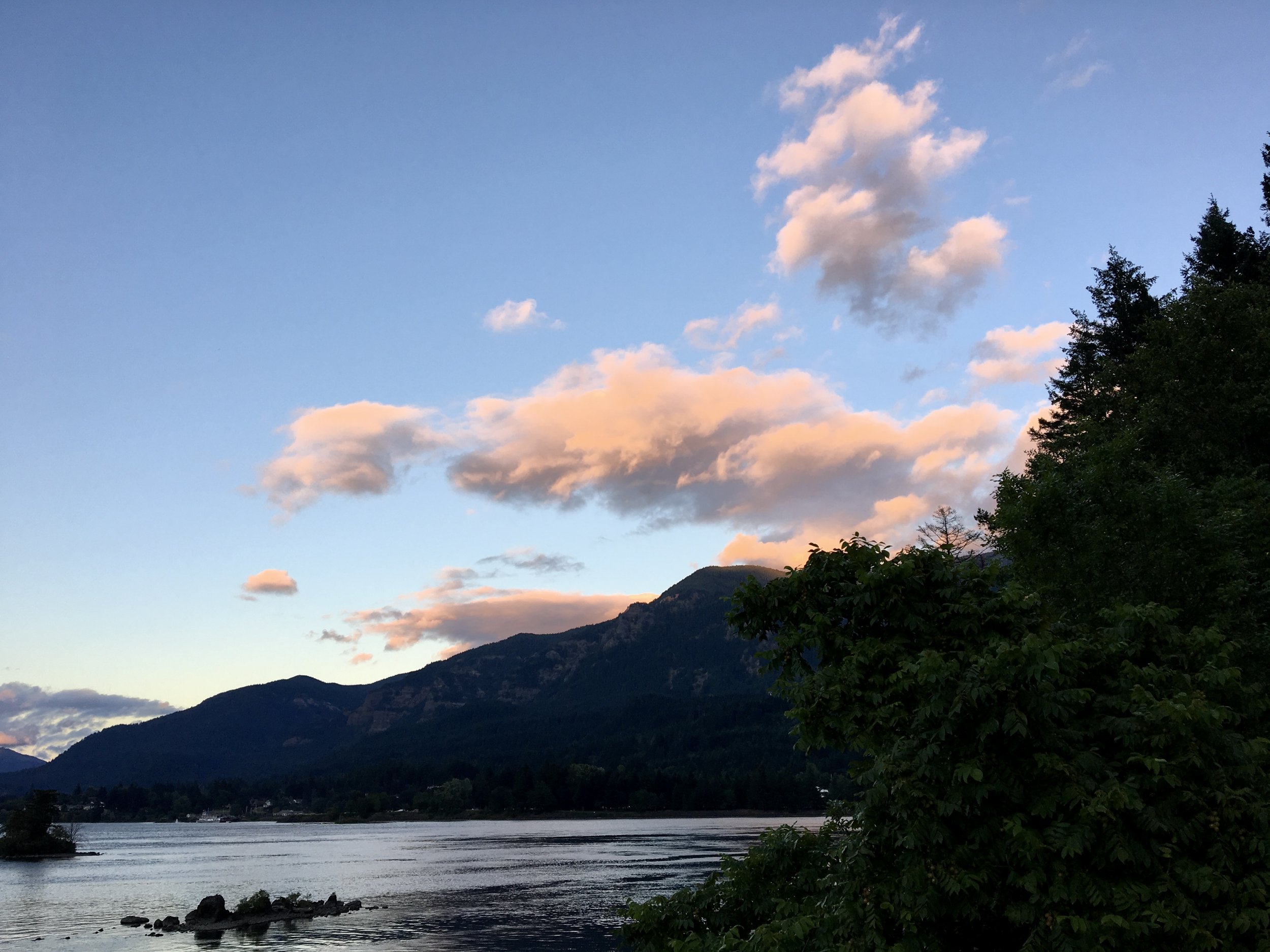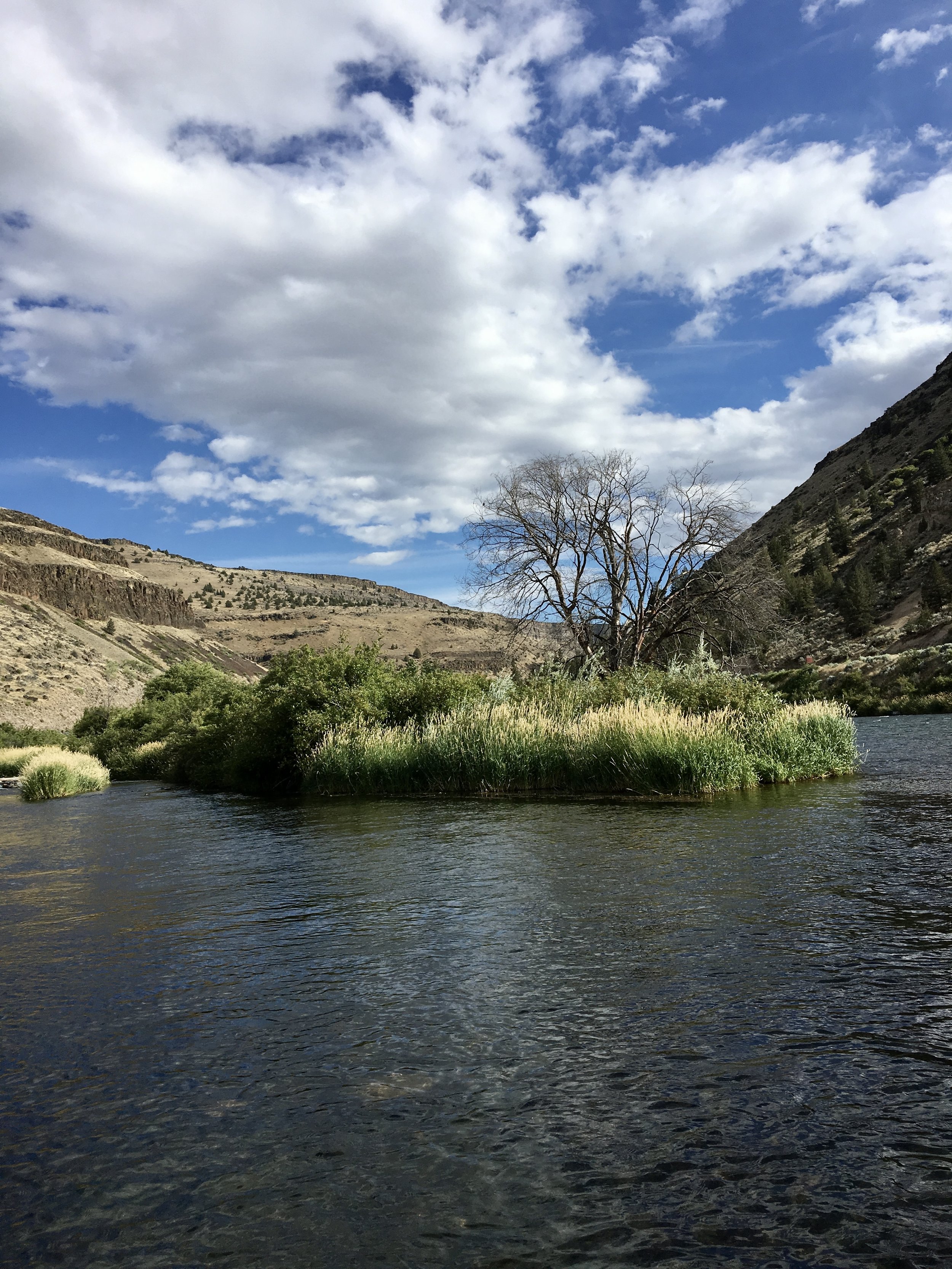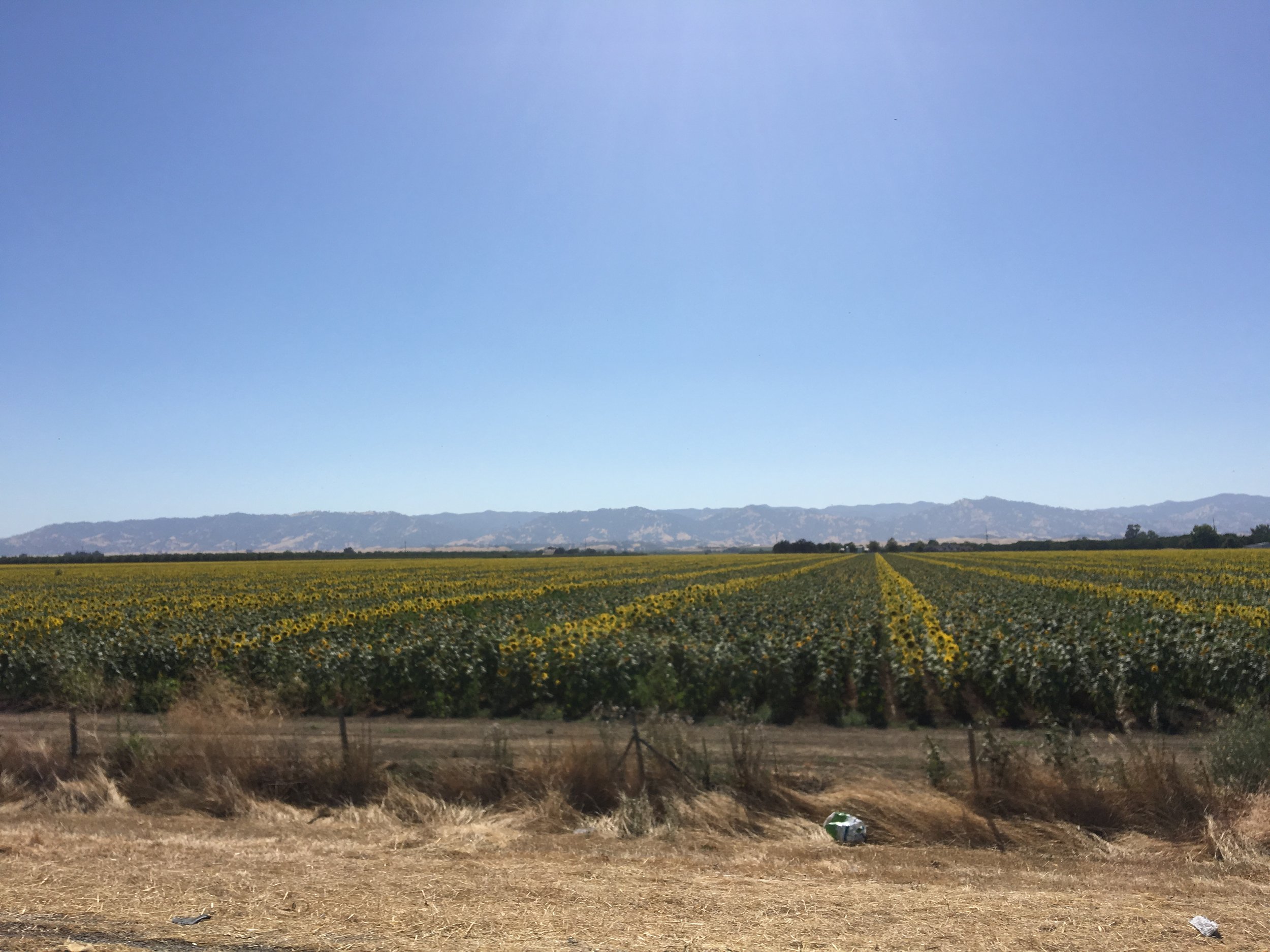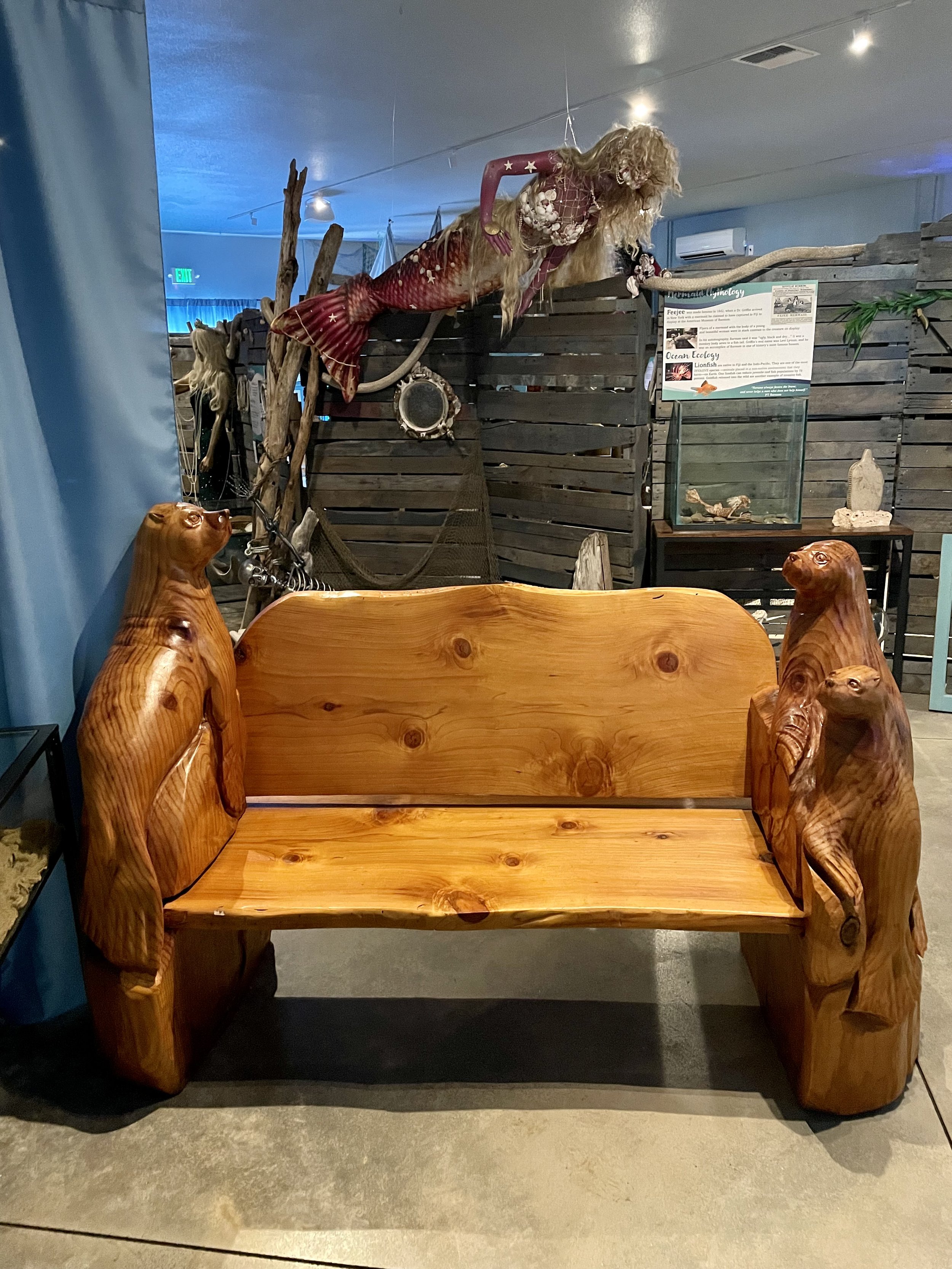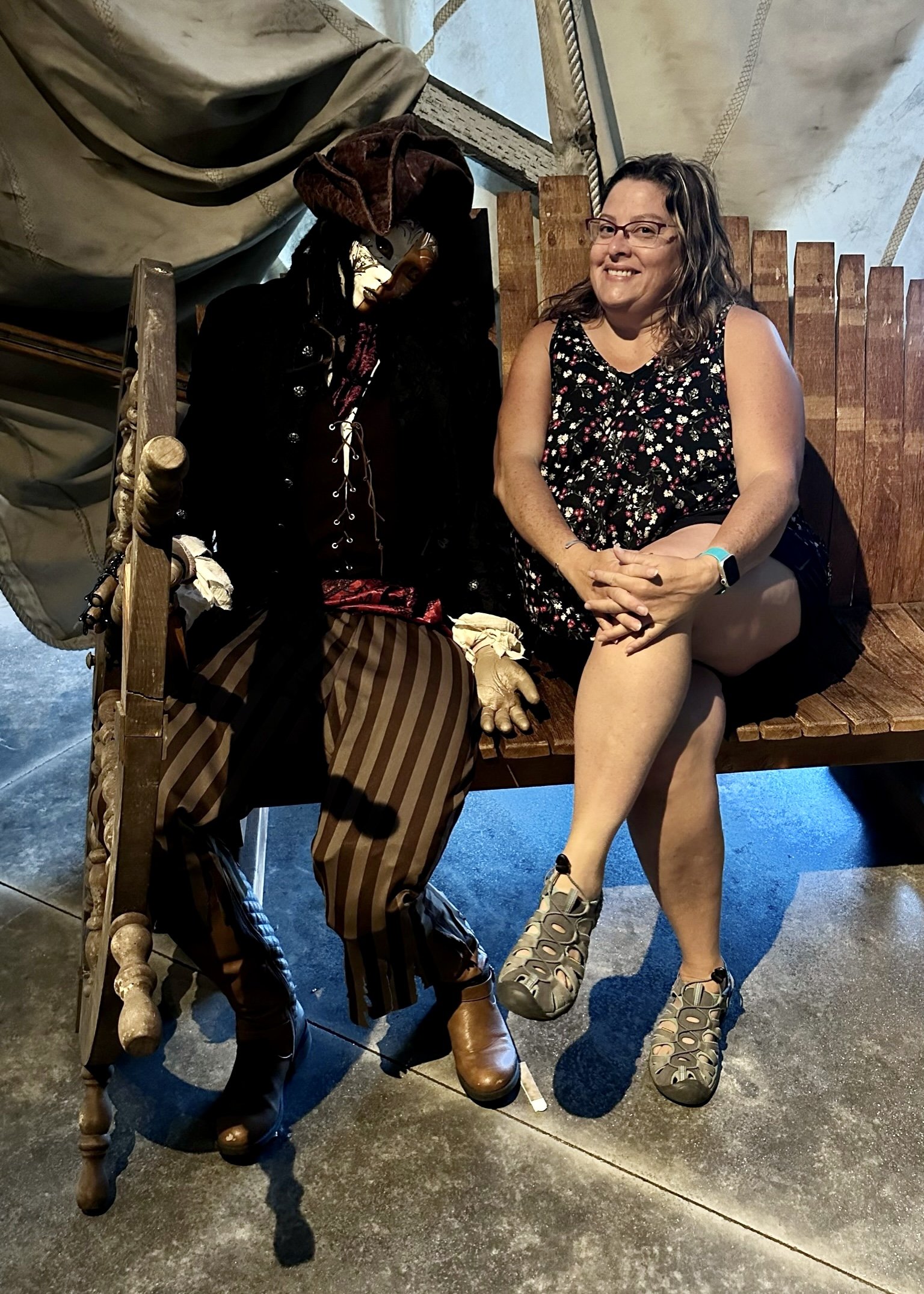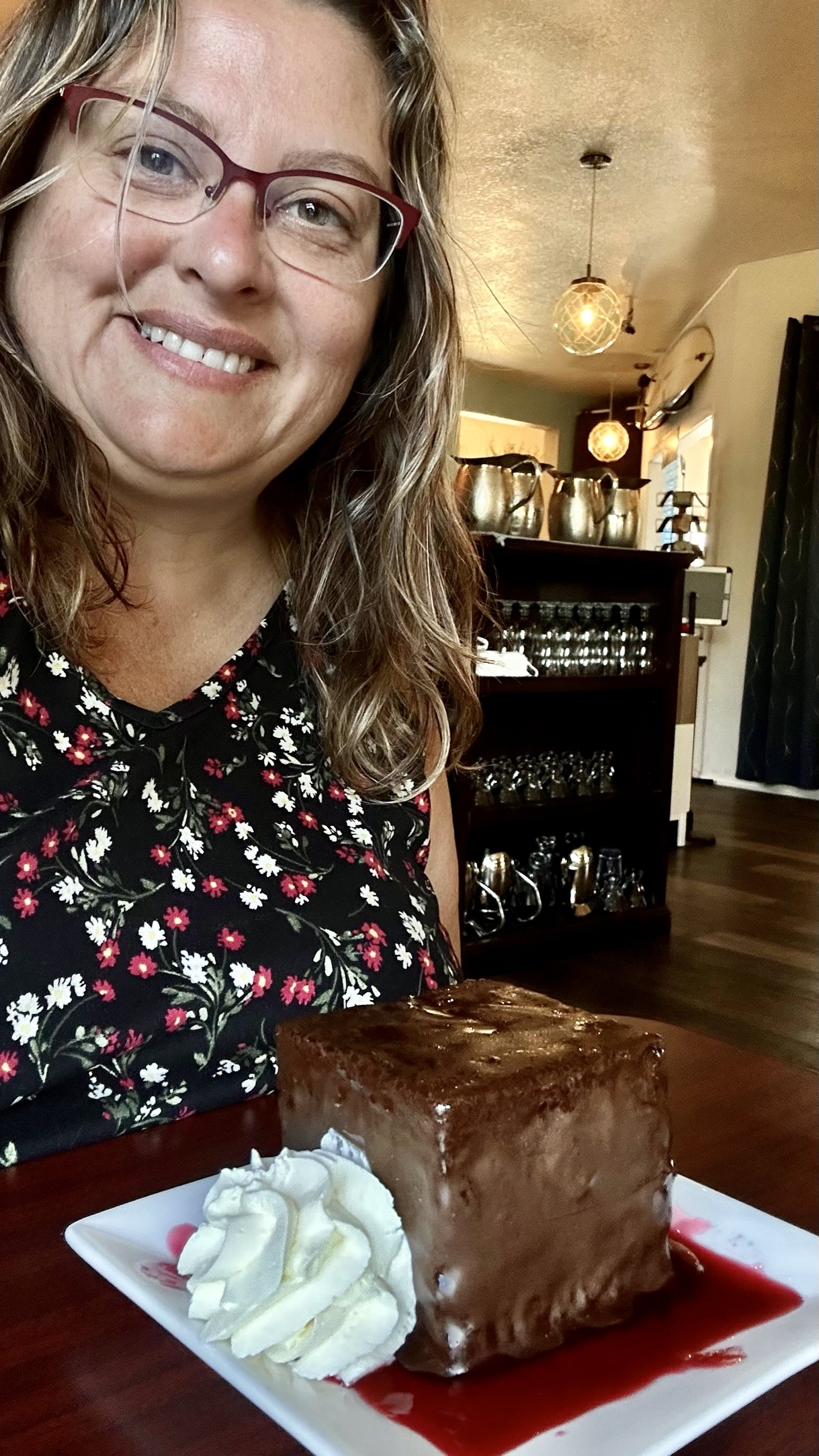I met Dylan, his mom Diana, and her partner David at Descend on Bend in 2021. That’s one of the things I love about vanlife gatherings — you meet some amazing people that become lifelong friends! Dylan and I hit it off right away and hung out a lot at Descend. We kept in touch after the festival and a few weeks later he came to Bellingham for a four day visit. I love showing off all the amazing places around my hometown to new people, so I took Dylan to as many places as I could during his stay!
After picking Dylan up from SeaTac airport on September 18th, we headed north with stops at the Skagit River Walk in Mount Vernon and Taylor Dock in Bellingham. The next morning we headed to Deception Pass State Park and hiked part of the Goose Rock Trail and immersed ourselves in some “forest bathing,” appreciating the water views of Deception Pass along the path. Then we headed down to North Beach to soak in the iconic view of the famous bridge and comb the beach despite the cloudy weather. Dylan was all bundled up because he was cold, while I was fine in just my leggings and long sleeve shirt. Our next stop was West Beach with its scattered driftwood along the shore and 180* views of Rosario Strait, as well as nearby Deception Island. The cloud cover started to open up a little, allowing some blue skies to peak through.
From there we headed back over the bridge to Rosario Beach and checked out the Maiden of Deception Pass, aka Ko-kwal-alwoot, who’s Coast Salish legend prompted the creation of her statue and story posts here. As you walk around the grassy knoll of Rosario Head, you can see Bowman Bay, the Salish Sea, and the San Juan Islands, making this one of my favorite places to enjoy! Deception Pass State Park is a great camping location, which I highly recommend to anyone visiting the area, though they do book up quickly in the tourist season.
After our time roaming around Deception Pass, Dylan and I headed into Anacortes for a Thai lunch and then drove to Cap Sante Park to see the view of the marina and Mount Baker, though the mountain was hiding in clouds that day (as it often does). We took the scenic route back towards Bellingham along Padilla Bay, through the tiny town of Edison, and then around Samish Bay to the Chuckanut Drive Scenic Byway. The viewpoint along Chuckanut Drive is another one of my favorite places to show visitors with its exceptional view of the San Juan Islands. I found a huge maple leaf to pose with and admired the tree that grew over a rock there. We were too early for the sunset but I highly recommend watching a sunset from here if you can! I even let Dylan drive my van home that day, which he did marvelously.
The second full day of adventures started with a drive up to the Canadian border to see Peace Arch Park. It wasn’t very busy that day making it perfect for photos standing in the International Peace Arch, a 67-foot dramatic white arch that rises from the green lawns and flowering gardens on the USA-Canada border. I had some fun straddling one of the boundary pillars and we enjoyed walking the grounds to read all the historical markers and plaques. We stopped at a small garden there where the biggest leaf I have ever seen was growing. Turns out it is a Chilean rhubarb and the leaves can grow up to 8.2 feet (2.5 m) across!
We enjoyed lunch in the border town of Blaine, then headed south to Whatcom Falls Park to walk around and see the famous waterfall and stone bridge. This park is another go-to spot for me to show people as you can stroll along Whatcom Creek and see two smaller falls, as well as a derby pond and a fish hatchery. There was still some time left before dinner, so we drove to Lake Padden Park and walked part of the 2.6 miles long trail around the lake to take in the views. This fabulous day ended with a fancy dinner at Anthony’s Hearthfire Grill at Squalicum Harbor while enjoying the sunset hues over the marina.
September 21st was an incredibly beautiful day with the sun out in full effect! En route to Ferndale, we drove over the Nooksack River where you can see some cool Metallica graffiti on the BNSF railroad trestle. Dylan and I ended up at Tennant Lake to enjoy the fragrance garden and boardwalk trail through the wetlands. I always love seeing Mount Baker on clear days like this and Dylan did a great job posing for me. Since we were in Ferndale near my buddy’s house, we made a quick stop of pose with his super cool 4-ft Sasquatch statue. Once we got back to my house, we went down to Lake Whatcom and enjoyed some time at AM/PM beach. I am super lucky to live only a few minutes from this spot that features both a sandy beach (AM) and grass beach (PM), named for the time of day they get the best sun exposure. Later that evening, Dylan wrapped himself up in my Rumpl blanket on my balcony with my cat Maverick at his side, ending another fun day.
On Dylan’s last day, we headed to Seattle to meet up with his mom Diana and explore all the touristy places we could. We started at the Space Needle, built for the 1962 World's Fair and at 605 ft (184 m) high, it was once the tallest structure west of the Mississippi River. The tower is 138 ft (42 m) wide, weighs 9,550 short tons (8,660 metric tons), and is built to withstand winds of up to 200 mph (320 km/h) and earthquakes of up to 9.0 magnitude, as strong as the 1700 Cascadia earthquake. You can lean into breathtaking views through floor-to-forever glass on their unique glass benches, though I personally had trouble with that due to my fear of heights. Sadly it was very cloudy that day so we couldn’t see Mount Rainier, but the views were still incredible. On the lower level there’s a revolving glass floor called the Loupe you can walk on, which also made me a bit nauseous.
Next up was Chihuly Garden & Glass located right next to the Space Needle. This wonderful exhibition shows off the stunning glass art of Dale Chihuly and includes eight galleries, the centerpiece glasshouse, and a lush garden. These exhibits provide a look at Chihuly’s inspiration and influences and brings together many of the elements of his work, including drawings, signature glass series, large architectural installations and his personal collections. The 100-foot-long installation of red, orange, and yellow flowers inside of the Glasshouse is one of Chihuly's largest suspended sculptures and absolutely incredible to see in person! I was blown away by all the exhibits and highly recommend this place to anyone visiting Seattle.
Our excursion continued with a long walk to Pike Public Market to check out the shops and see the Seattle waterfront. I knew the famous Gum Wall was nearby, which we discovered was on Post Alley underneath the market. This colorful display started in the 1990s when local patrons and performers at Unexpected Productions stuck their used gum on the wall. Since those days, the wall has grown to 50 feet (15 m) long and included pieces as high as 20 feet (6.1 m)! The wall was cleaned in November 2015, taking 130 hours to complete, with over 2,350 pounds (1,070 kg) of gum removed and disposed of. But gum was re-added fairly quickly after and continues to be an artistic representation of Seattle’s unique charm and character. Dylan and I had to leave our mark so we chewed some gum real quick and added it to one of the brick archways (highlighted in red circle below). After a long walk back to my van, we headed to Kerry Park to see the iconic view of downtown Seattle and Elliott Bay.
We were starving, so we headed to the Fremont district to grab lunch. It only made sense to check out the Fremont Troll under the Aurora Bridge after we ate since we were close by. This 18-feet (5.5 m) tall troll is made of concrete and clutches an old VW car where it sits as if he just swiped it off the road. The car is an actual Volkswagen Beetle encased in concrete, which used to be red and bear a California license plate. The VW originally held a time capsule, including a plaster bust of Elvis Presley, but sadly that was stolen when the sculpture was vandalized. The troll was sculpted by Steve Badanes, along with two of his University of Washington architecture students, Will Martin and Ross Whitehead, and Steve’s then-girlfriend Donna Walter in 1990 after winning a competition organized by the Fremont Art Council. In addition to taking photos with the troll, I added both my Barb Rocks and Maverick stickers to the Troll Avenue sign. We also saw the 14-foot Joe Rantz statue in the Fremont neighborhood, honoring the University of Washington rowing team that won the gold medal in the 1936 Olympic Games in Berlin, Germany.
Our last stop of the day was Washington Park Arboretum on the shores of Lake Washington. This 230 acres park contains a dynamic assortment of plants, some found nowhere else in the Northwest. The arboretum is known for its Azalea Way, a stretch of the park which offers a unique tapestry of azaleas of many colors and best viewed in the springtime. Since we only had 1.5 hours to stroll around, we focused our time on the Lookout Trail delighted by the various collections of plants and ponds we discovered along the way.
Our explorations came to an end on the evening of September 22nd and it was time to head to SeaTac airport to drop Dylan off for his flight home to Ventura, California. Then I drove Diana to the ferry station so she could get back to her home in Sequim. I would say we accomplished a lot in a short period of time and had the best time together!



